Review AMD Radeon RX 5700 XT and Radeon RX 5700 [AMD Radeon Navi] – Not only CPU is what AMD surprises us at the launch of July 7, but also its GPUs begin to refresh the old Polaris generation, which since 2016 accompanied the mid-range AMD Radeon. Starting with 2 models, Radeon RX 5700 and RX 5700XT AMD Radeon takes its initial step into what will be this new Navi family with its new RDNA architecture.
After AMD’s last attempt to maintain an important place in the gamer scene by squeezing its GCN architecture to the fullest, with its Vega and Vega II GPUs (7nm), these were not attractive enough in the eyes of consumers, both for their price , its performance and its consumption. Now comes a new GPU called NAVI, based on a new architecture called RDNA.
The step of using a 7nm process, with a completely new architecture, is that smaller chips can be produced, without losing performance or increasing consumption, which is why the die area could be reduced from 495mm2 of the Radeon Vega 64 , up to 251mm2 of these new GPUs.
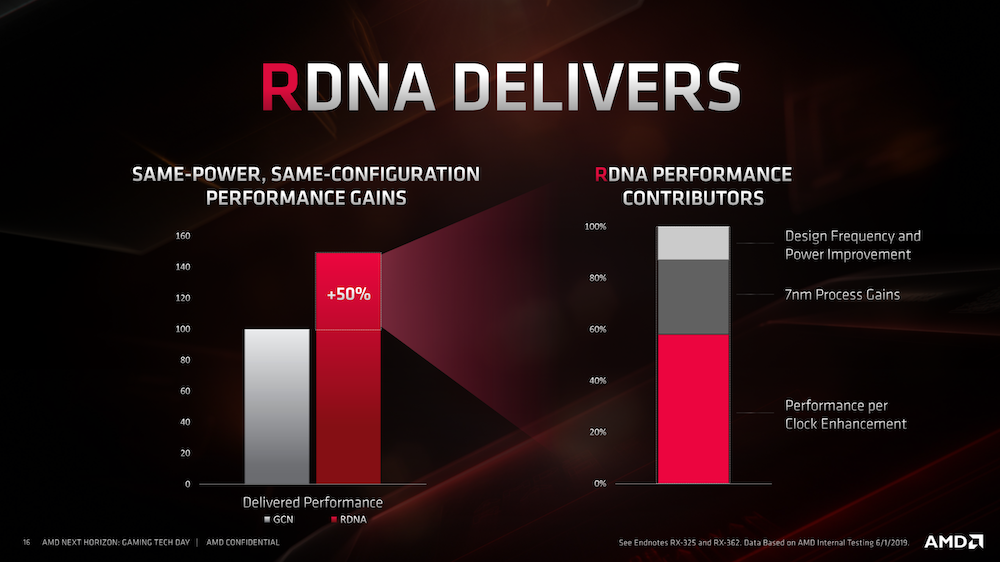
Of all this performance gain, 60% corresponds to the increase in operating frequencies, 25% to the gain of using a 7nm process, and only 15% to improvements in design and consumption.
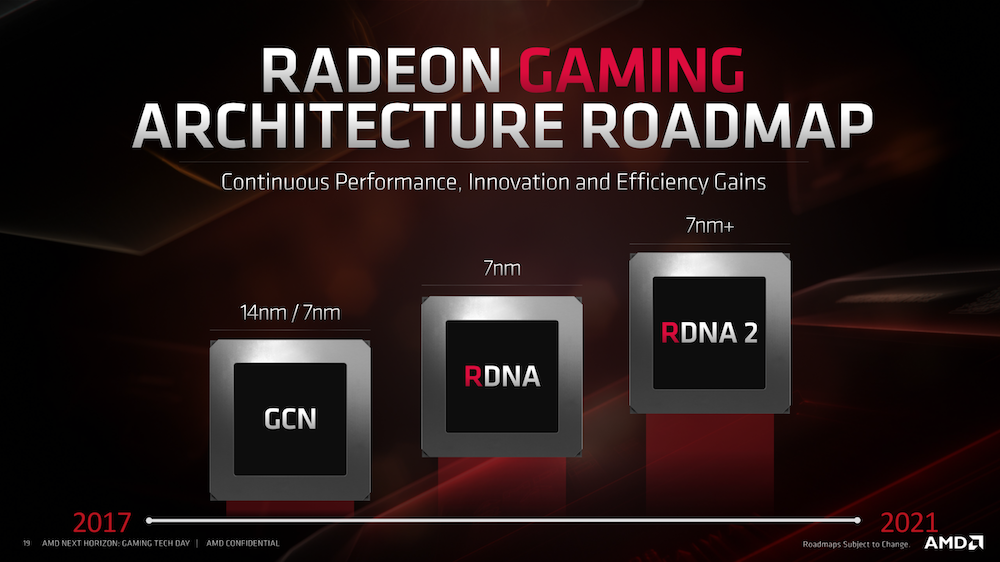
Like all new architecture, as they have done with Zen in the CPUs, AMD has planned the RDNA architecture for several years, and they are already planning their second version for next year, with the improved 7nm process (7nm +).
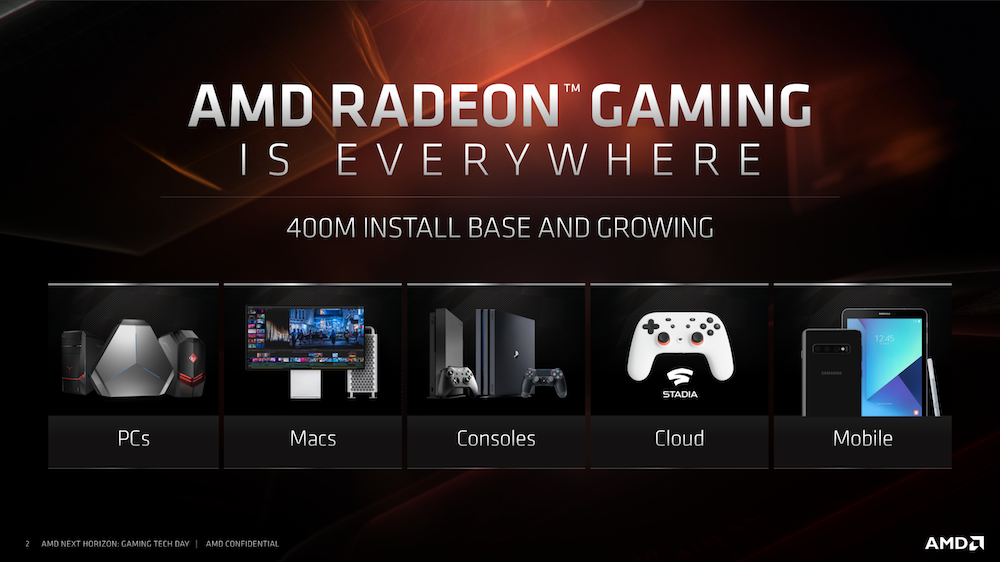
There are currently 400Millions of Radeon products in the world, now Radeon will be present in 5 business verticals, PCs, Mac (New Mac Pro), Consoles (XBOX “Scarlet” and PS5), Cloud (Google Stadia) and Mobile (thanks to a agreement with Samsung). All of these will be supported by Navi-based GPUs, in some of their variants.
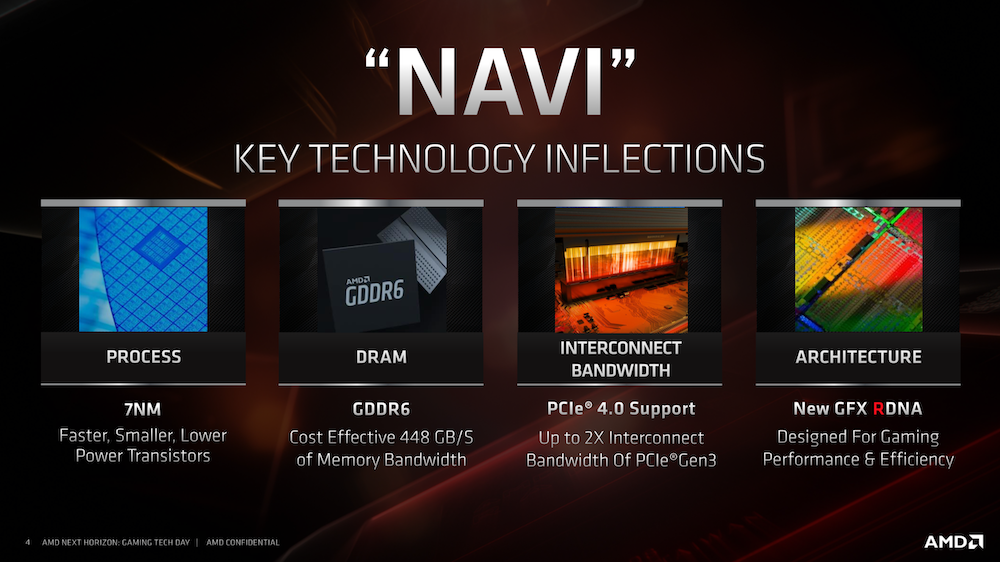
As mentioned, Navi is the name of this family of GPUs, which has as highlights: 7nm manufacturing, use of 14Gbps GDDR6 memories, which grant up to 448GB / s of bandwidth, support for PCie 4.0 increasing the width of band available to the CPU, and finally the use of the new RDNA architecture, with improvements in efficiency and performance.
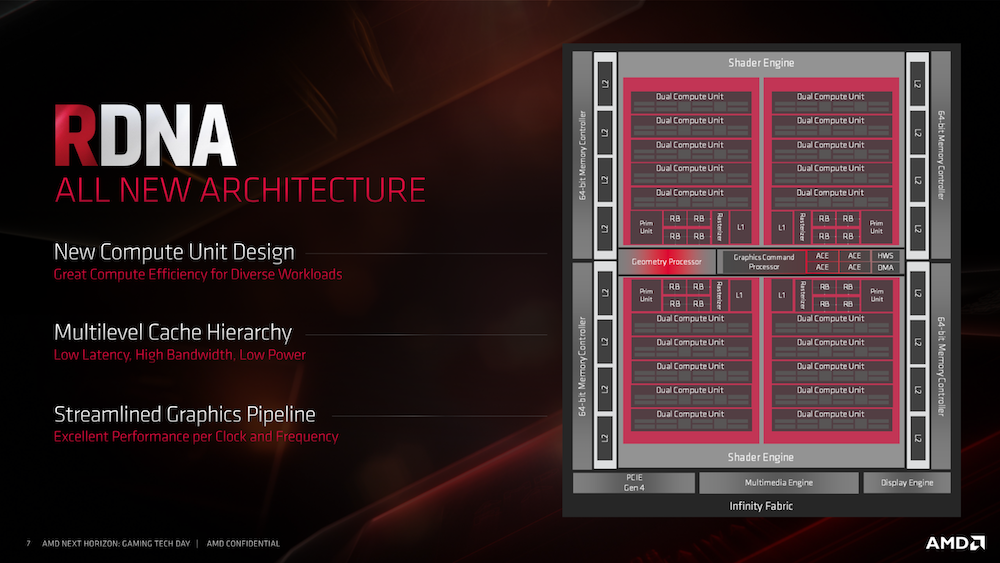
Among the new things that RDNA includes, we can highlight 3: New Computing unit, Multilevel cache hierarchy, and a new graphic pipeline more orderly and faster. The sum of these 3 characteristics will give RDNA-based GPUs a better performance when performing tasks, which will result in better performance in our games and applications.
NAVI: What’s new that incorporates
Let’s look at other features of these new GPUs.
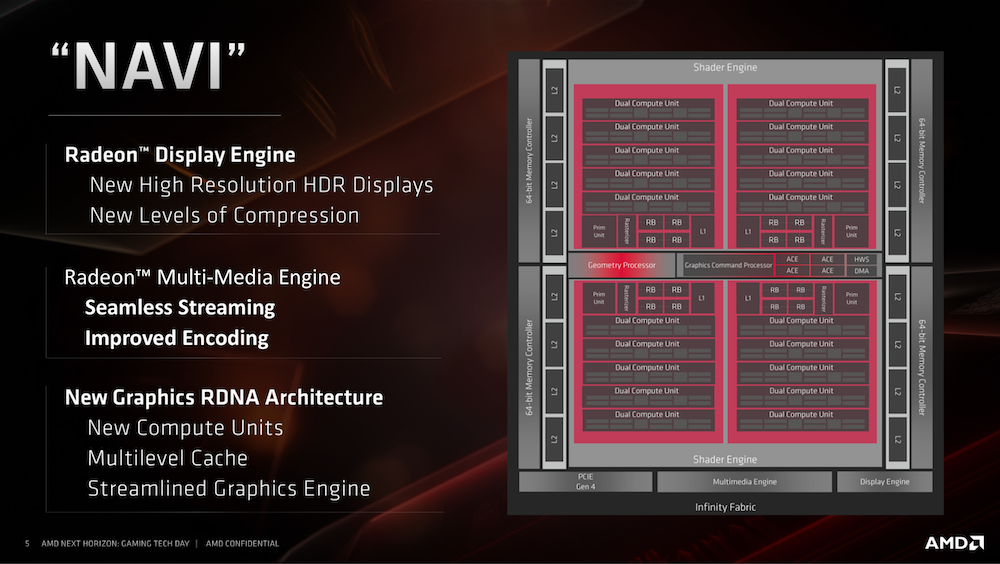
Along with being based on a new architecture called RDNA, Navi GPUs will have a new and improved Multimedia Engine, in addition to a new Display Engine.
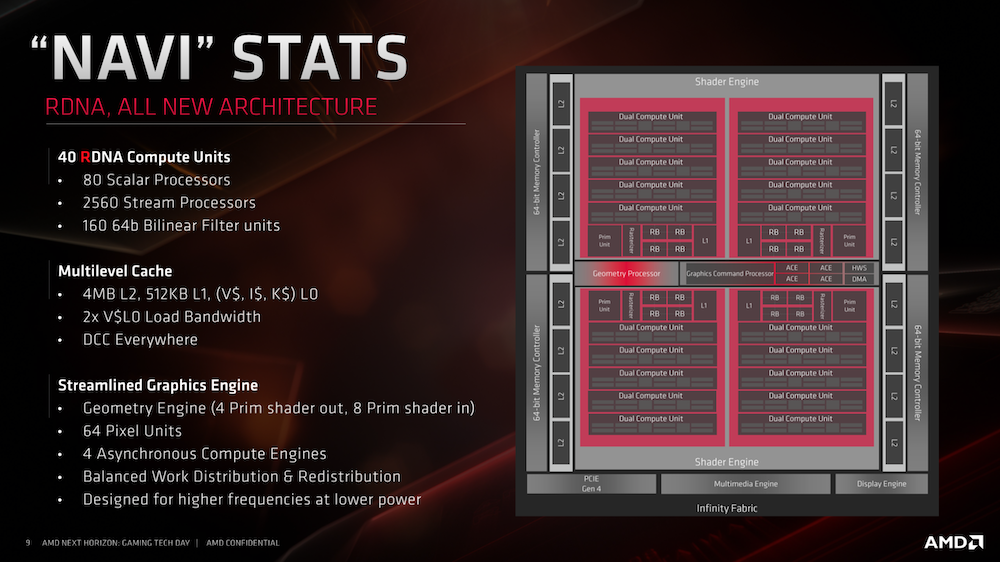
Navi 10 will own 40 Compute Units, with a total of 2560 Stream Processors and 80 scalar processing units. A better multilevel cache, and 64 pixel units (PPU), all this, to be able to handle the instructions better, and not have to wait many clock cycles, to be able to perform each action.
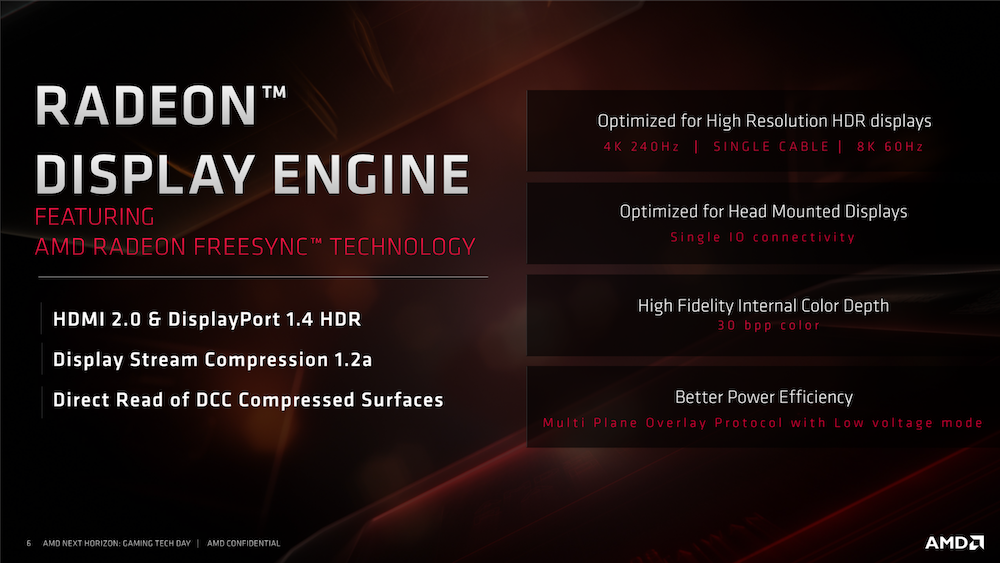
This new Display Engine, supports HDMI 2.0b and DisplayPort 1.4 HDR, capable of extracting 8K 60Hz video, or 4K 240Hz, all this without the need to use 2 cables. In this way, the use of cables on the desk is optimized, in addition to being able to better manage energy consumption.
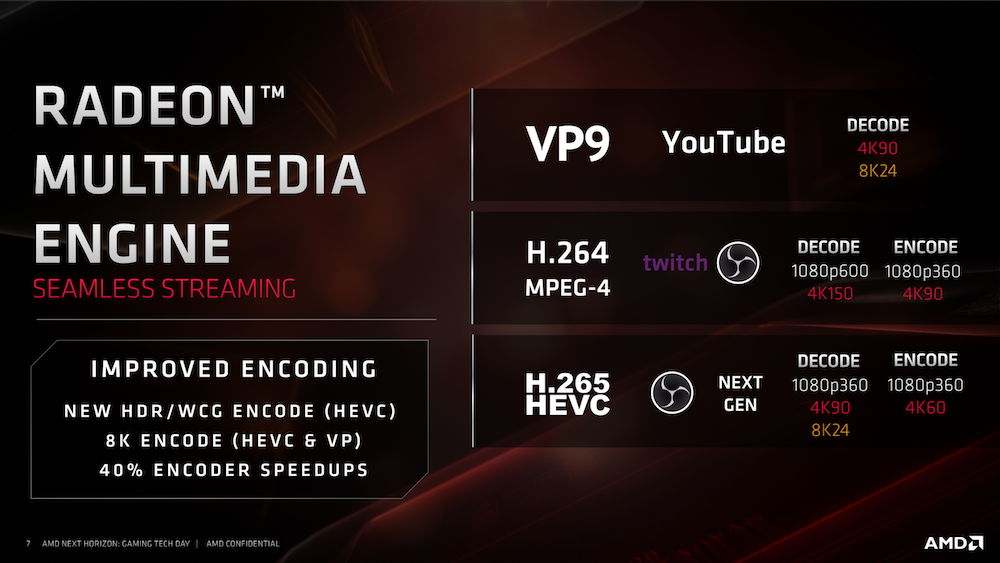
The new Multimedia Engine improves the support of the current codecs, in addition to providing HDR / WCG support to the HEVC codec, along with supporting 8K 24FPS.
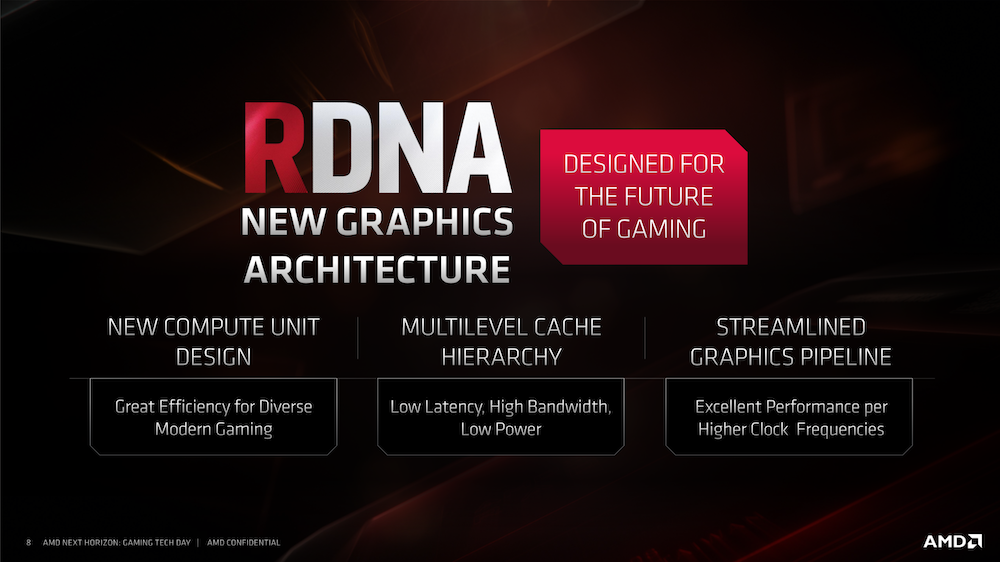
Finally, a summary of the new RDNA architecture: New computing units, Multilevel cache hierarchy, for low latency, bandwidth and low consumption, and finally a more orderly and efficient Pipeline, capable of providing better performance at high frequencies
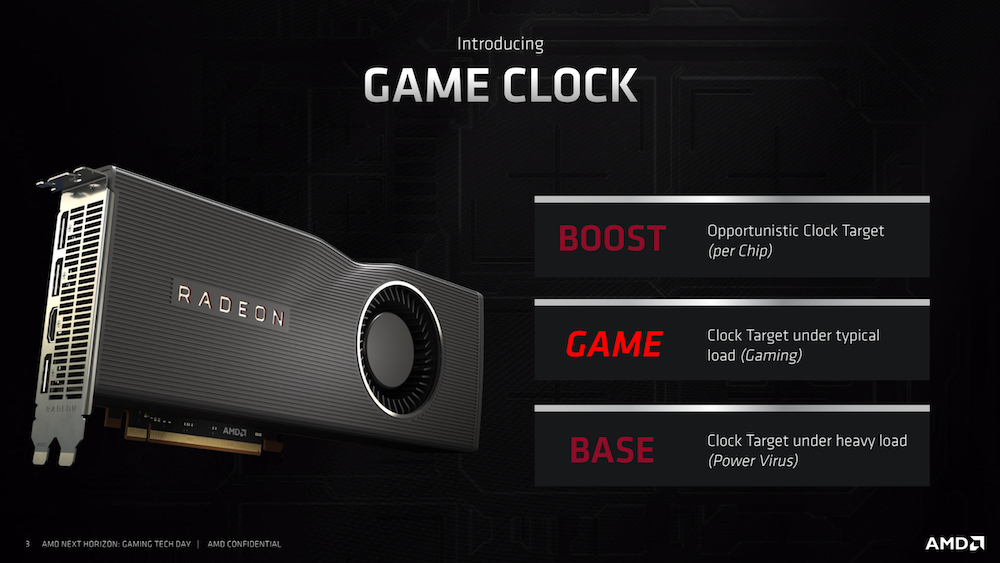
With the purpose of sincere information with users, AMD chose to create the so-called Game Clock, this new attribute is more than anything the minimum average frequency, at which the GPU would operate constantly under load, such as a game. This does not mean that it will never reach the Boost Clock frequency, but it is the typical frequency that one will be able to see when playing.
Specs.
| specs | AMD Radeon RX 5700 XT | AMD Radeon RX 5700 | AMD Radeon VII | NVIDIA RTX 2080 TI | NVIDIA RTX 2070 Super | NVIDIA RTX 2060 Super |
|---|---|---|---|---|---|---|
| Fabrication process | 7 nm | 7 nm | 7 nm | 12 nm | 12 nm | 12 nm |
| GPU | Navi 10 | Navi 10 | Vega 20 | TU102 | TU104 | TU106 |
| ROPs | 64 | 64 | 64 | 88 | 64 | 64 |
| Texture Units | 160 | 144 | 240 | 272 | 160 | 136 |
| Tensor Cores | – | – | – | 544 | 320 | 272 |
| RT Cores | – | – | – | 68 | 40 | 32 |
| Shaders | 2560 | 2304 | 3840 | 4352 | 2560 | 2176 |
| Core clock | 1605 MHz | 1465 MHz | 1802 MHz | 1350 MHz | 1605 MHz | 1470 MHz |
| Boost Clock | 1755 MHz | 1625 MHz | – | 1545 MHz | 1770 MHz | 1650 MHz |
| Memory Frequency | 1750 MHz | 1750 MHz | 1000 MHz | 1750 MHz | 1750 MHz | 1750 MHz |
| Memory | 8 GB, GDDR6, 256-bit | 8 GB, GDDR6, 256-bit | 16 GB, HBM2, 4096-bit | 11 GB, GDDR6, 352-bit | 8 GB, GDDR6, 256-bit | 8 GB, GDDR6, 256-bit |
| Connectors | 1x 8-pin, 1x 6-pin | 1x 8-pin, 1x 6-pin | 2x 8-pin | 2x 8 pin | 1x 8 pin, 1x 6 pin | 1x 8-pin |
| TDP | 225W | 185W | 295W | 260 W | 215W | 175W |
| Price | $ 399 | $ 349 | $ 699 | $ 1199 | $ 499 | $ 399 |
Now a look at what GPU-Z has to tell us.

The GPU clocks for now are not shown, as is the calculation of Pixel and Texture FillRate. The rest is perfectly displayed.
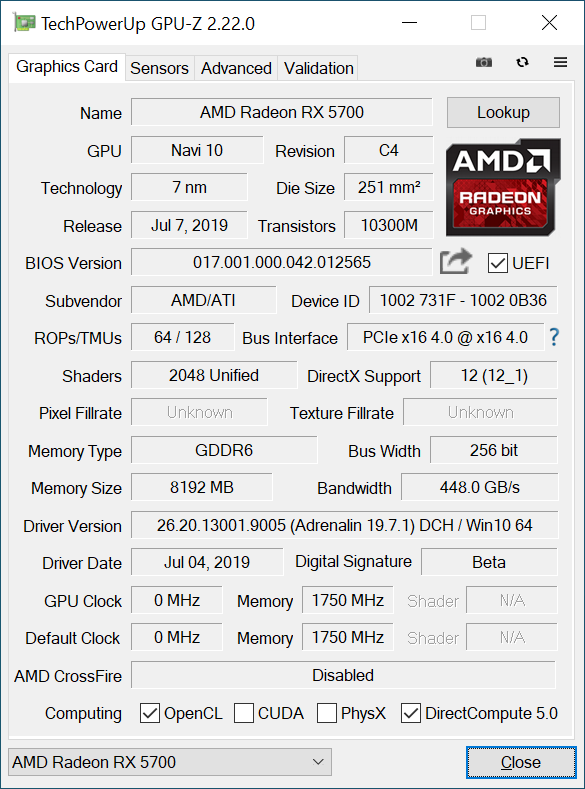
Same case with the RX 5700, most likely in a GPU-Z update you can have those values.
First look.
Now let’s take a look at these new video cards, which come to fight hard in the middle segment of the market.
AMD Radeon RX 5700 XT
First, let’s look at the top line of this first litter of Navi cards.
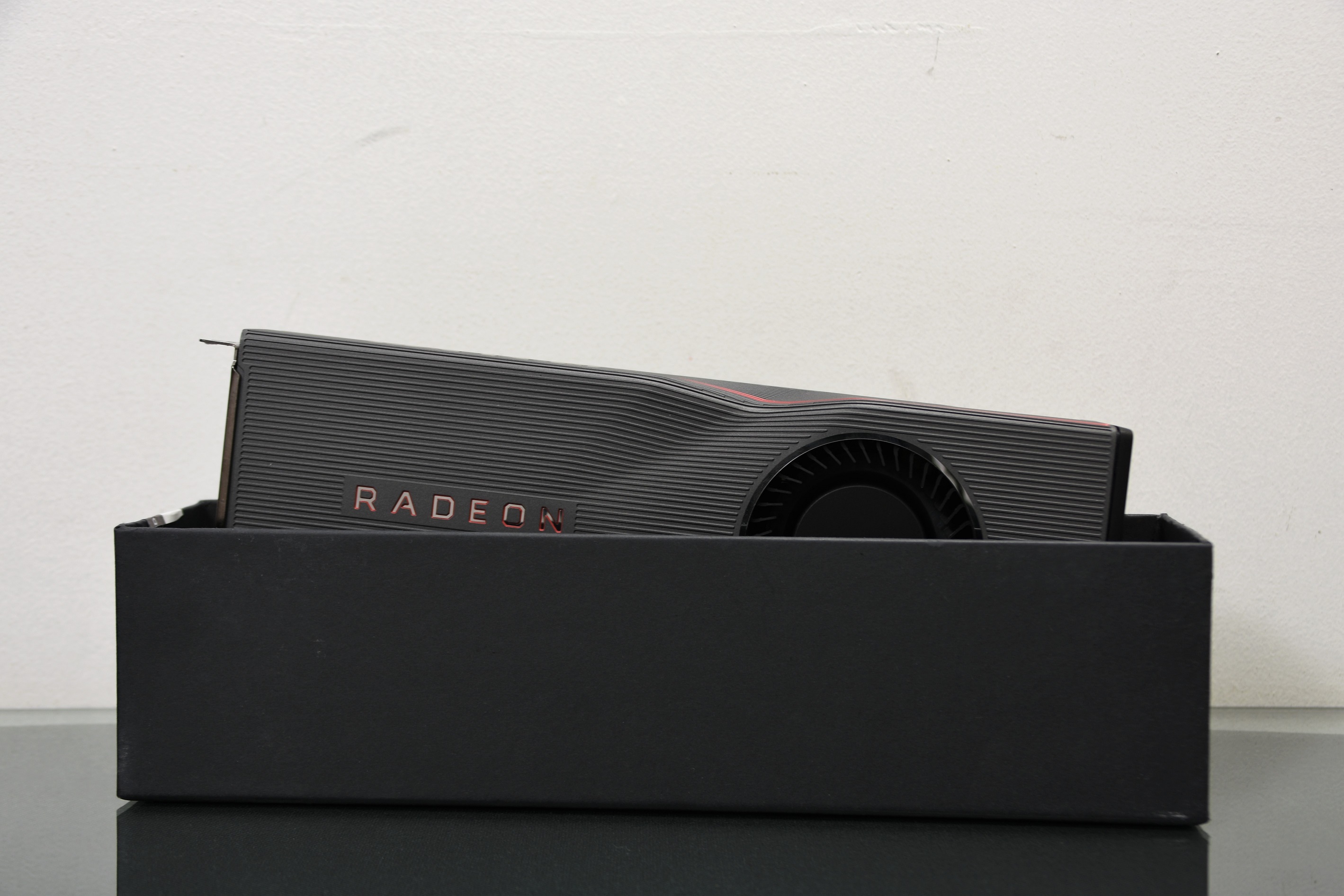
The packaging is quite elegant, and it must be said that it is very similar to what NVIDIA has been doing with its Founders Edition cards.
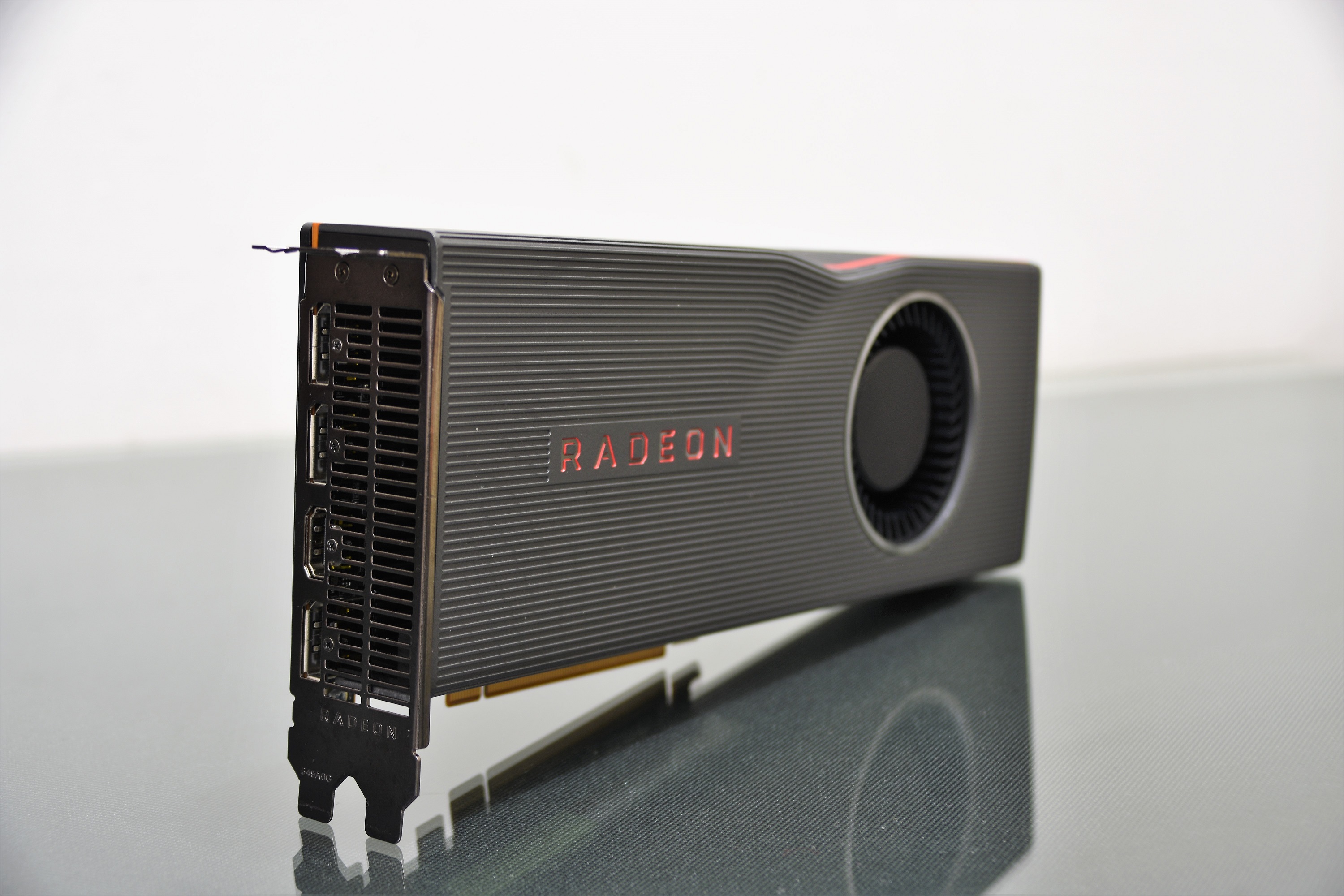
With a classic blower cooling design. This is enclosed in an aluminum container with a slight curvature, at the height of the fan.
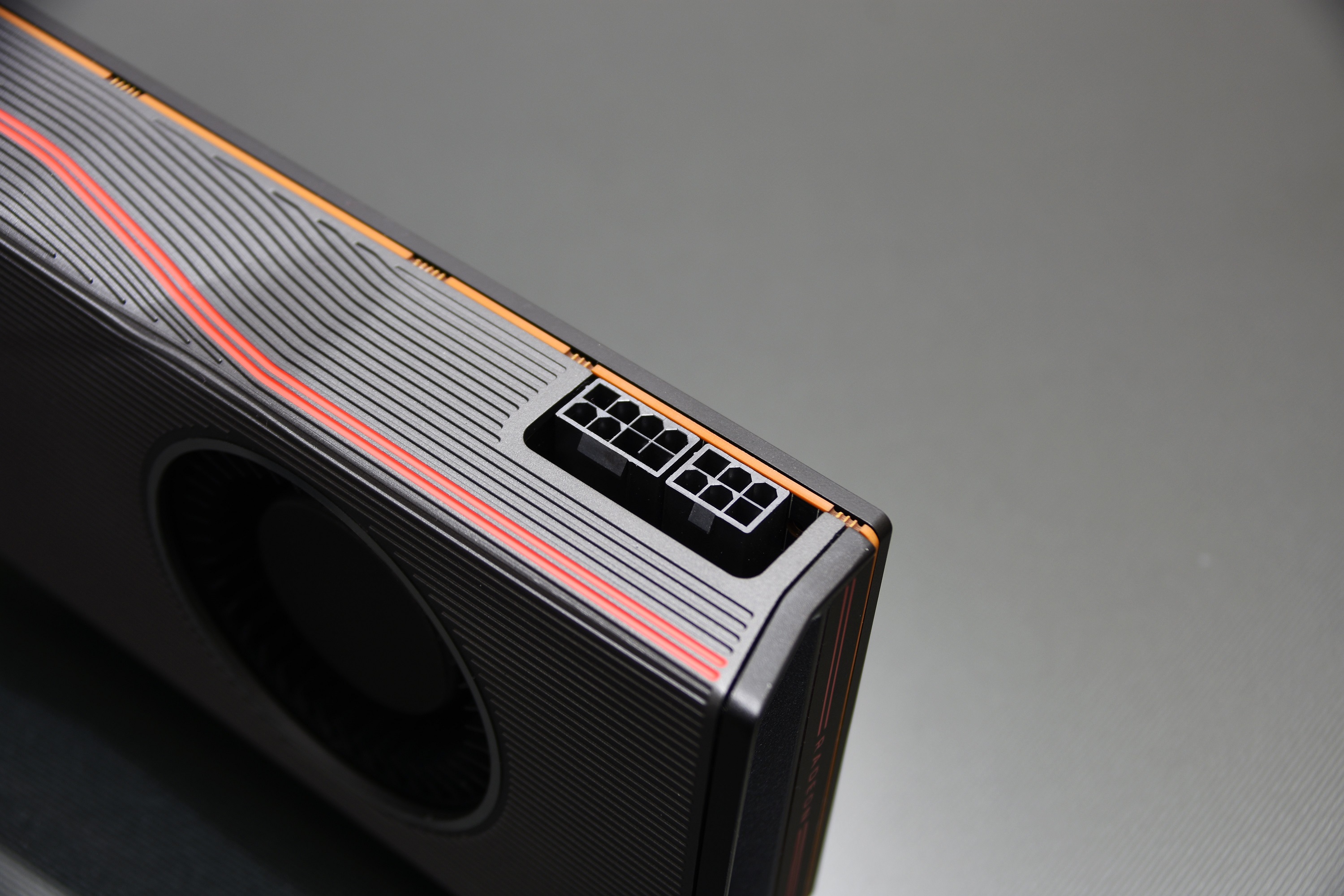
This Radeon RX 5700XT is powered by 2 PCIe power connectors (6 + 8). Which tells us that it is hungry for power.
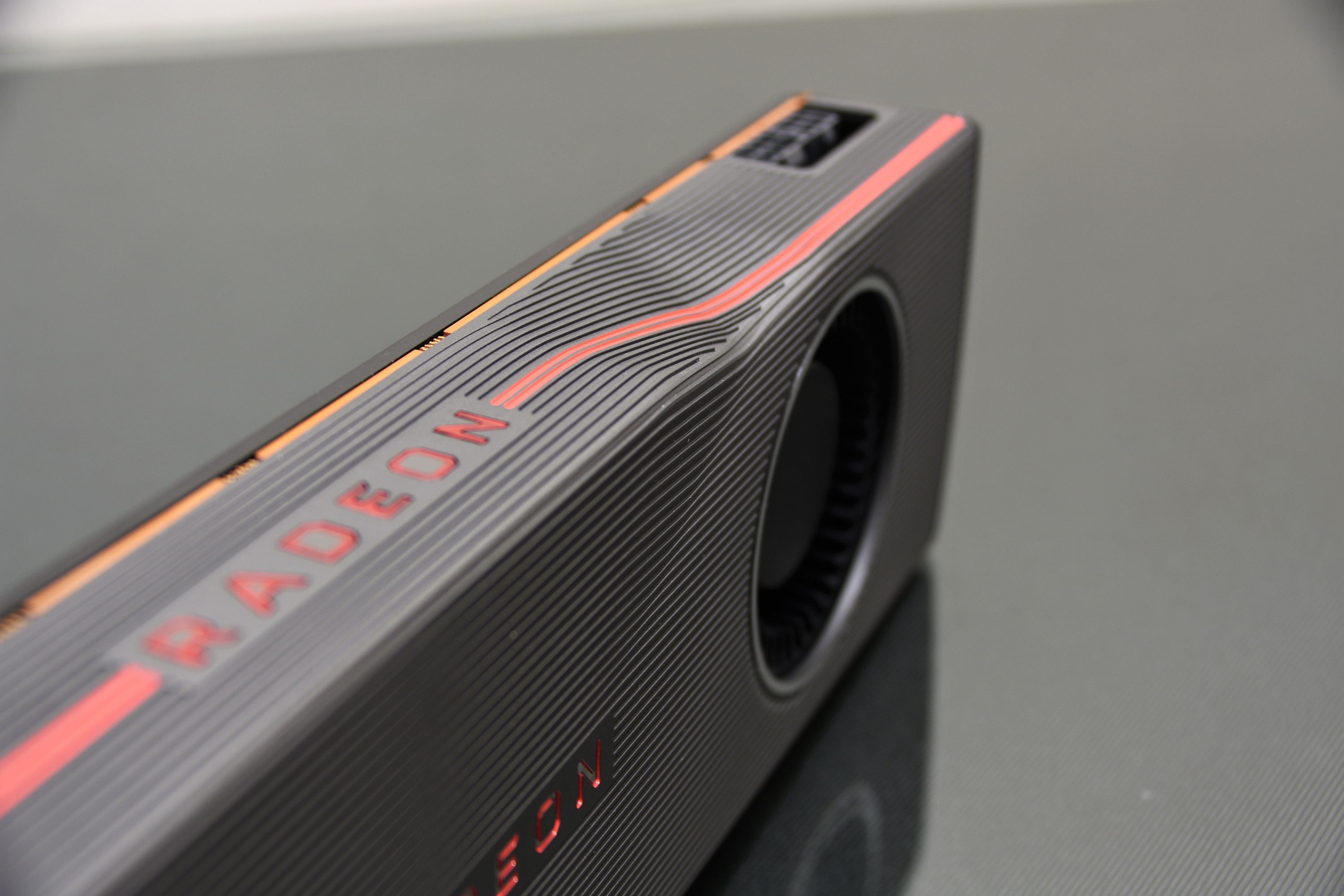
A close-up of the curvature it has near the fan. This curve, according to AMD is made to lower the noise level generated by the fan.
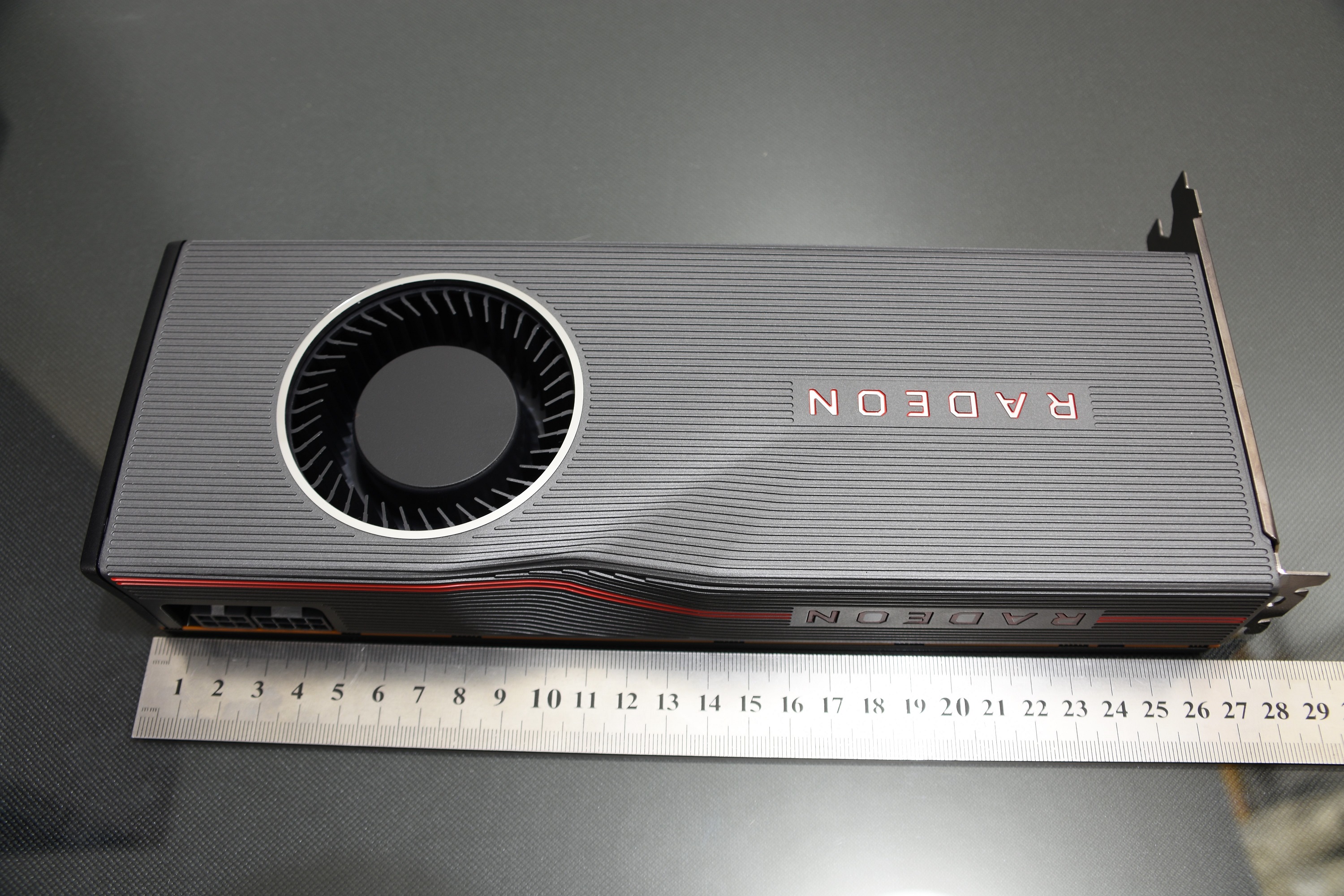
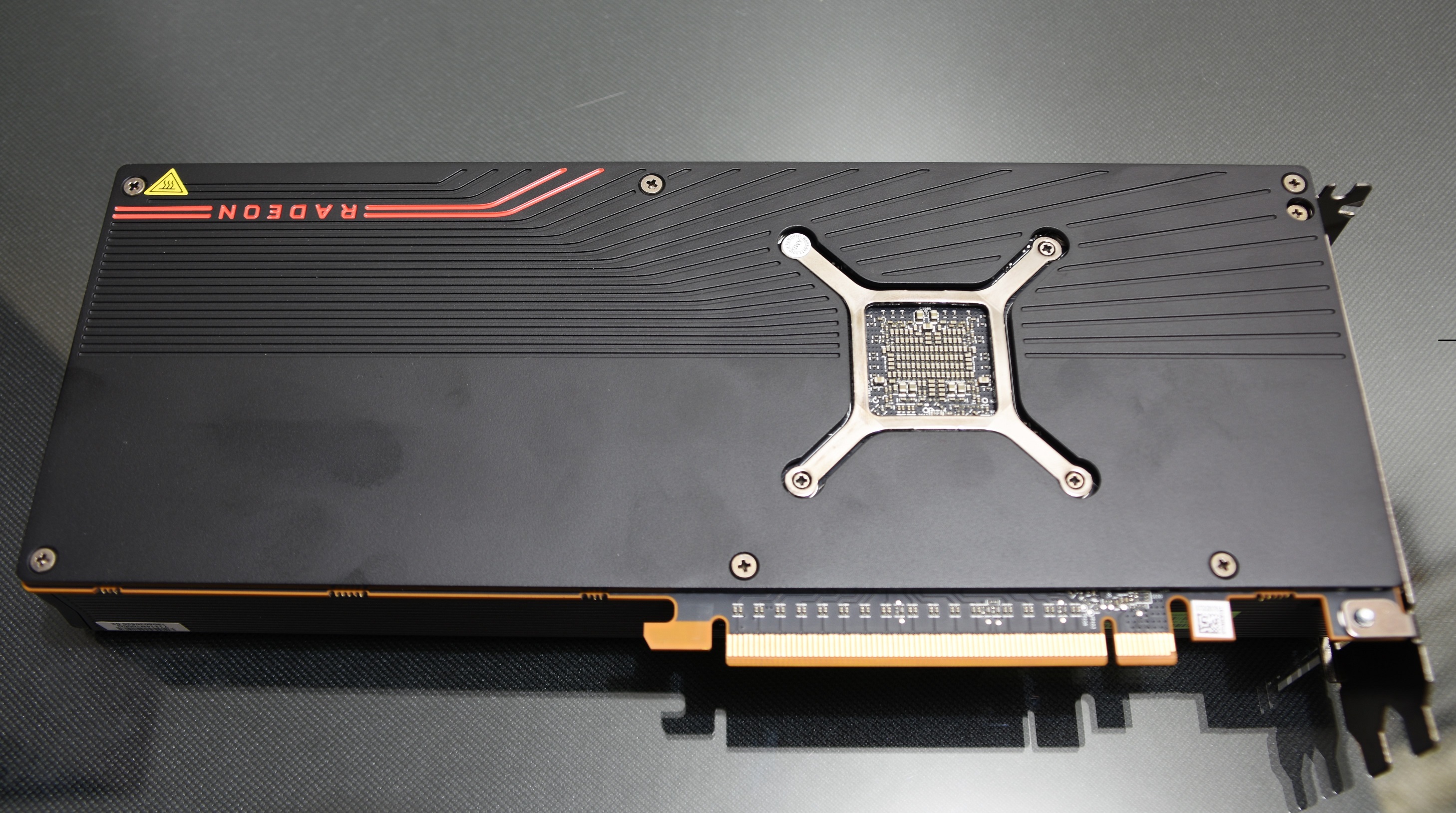
This is a long card, approx 27cms (10.6in). On the back you have a backplate that protects the entire PCB, except for the GPU area.
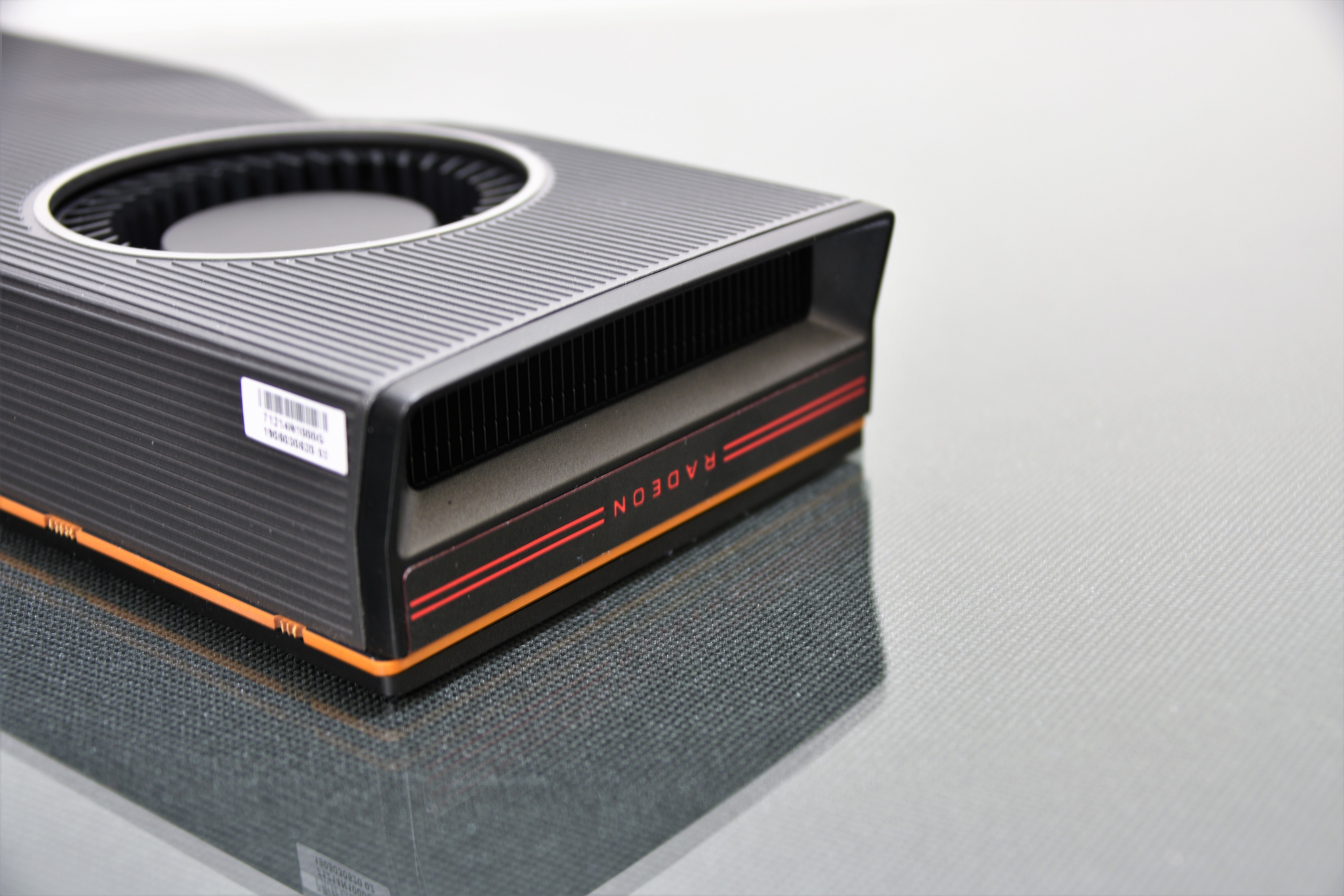
At the end of the card, there is an opening through which the air that moves the fan enters.
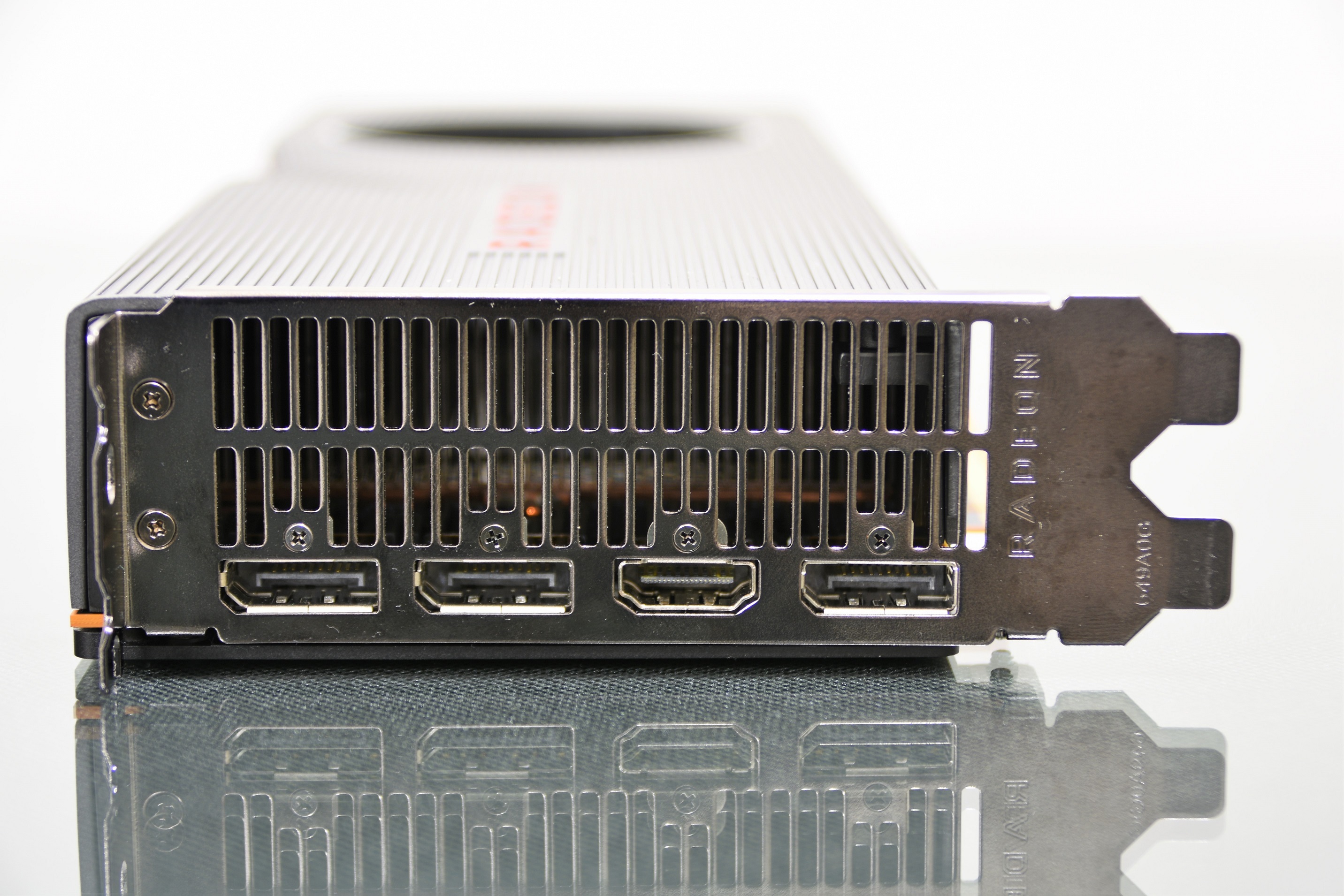
Finally, at the other end you have the video connectors (3x DisplayPort 1.4 HDR and 1x HDMI 2.0b), and the ventilation grill through which all the hot air inside comes out.
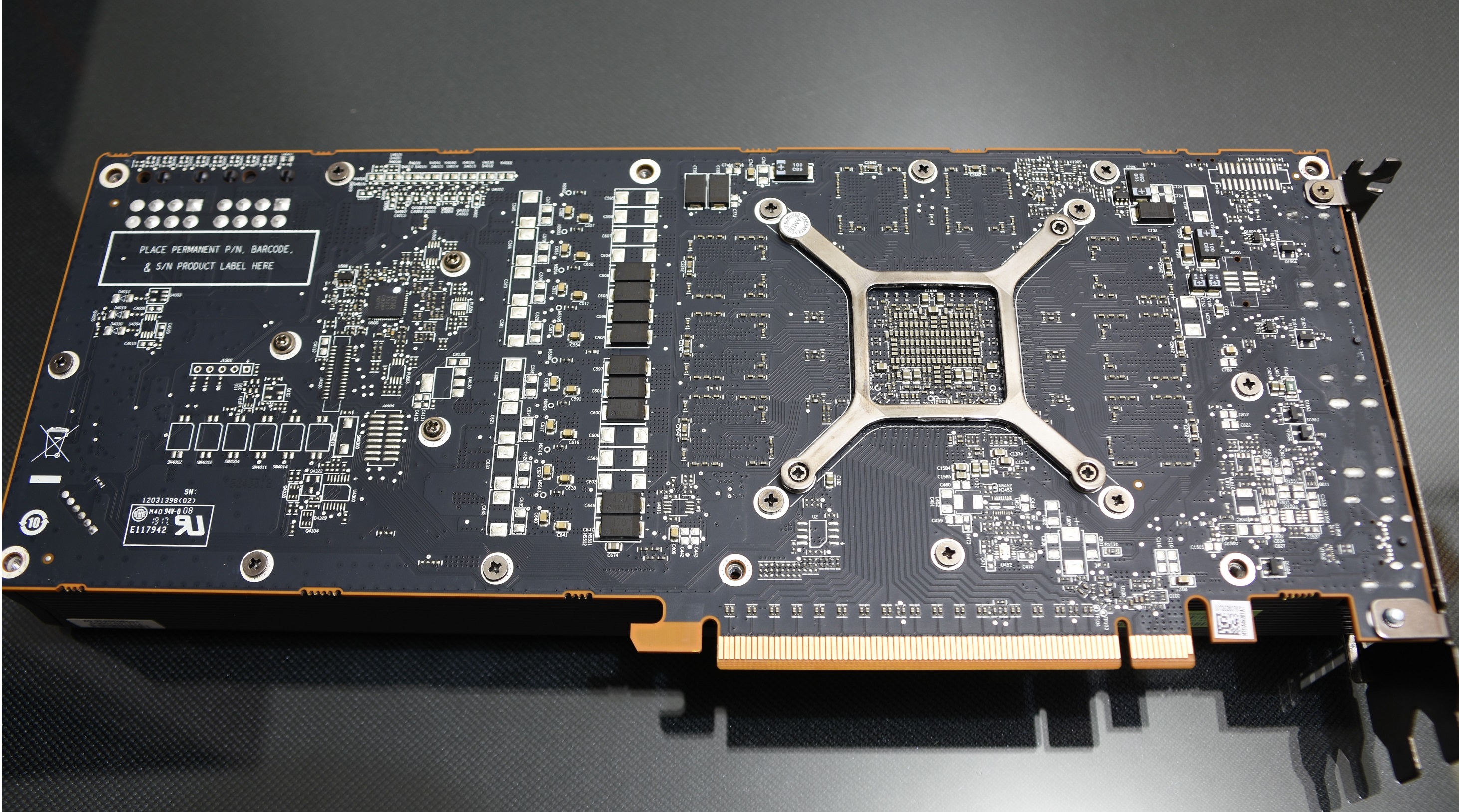
Removing the backplate, you have a more complete look at the PCB.
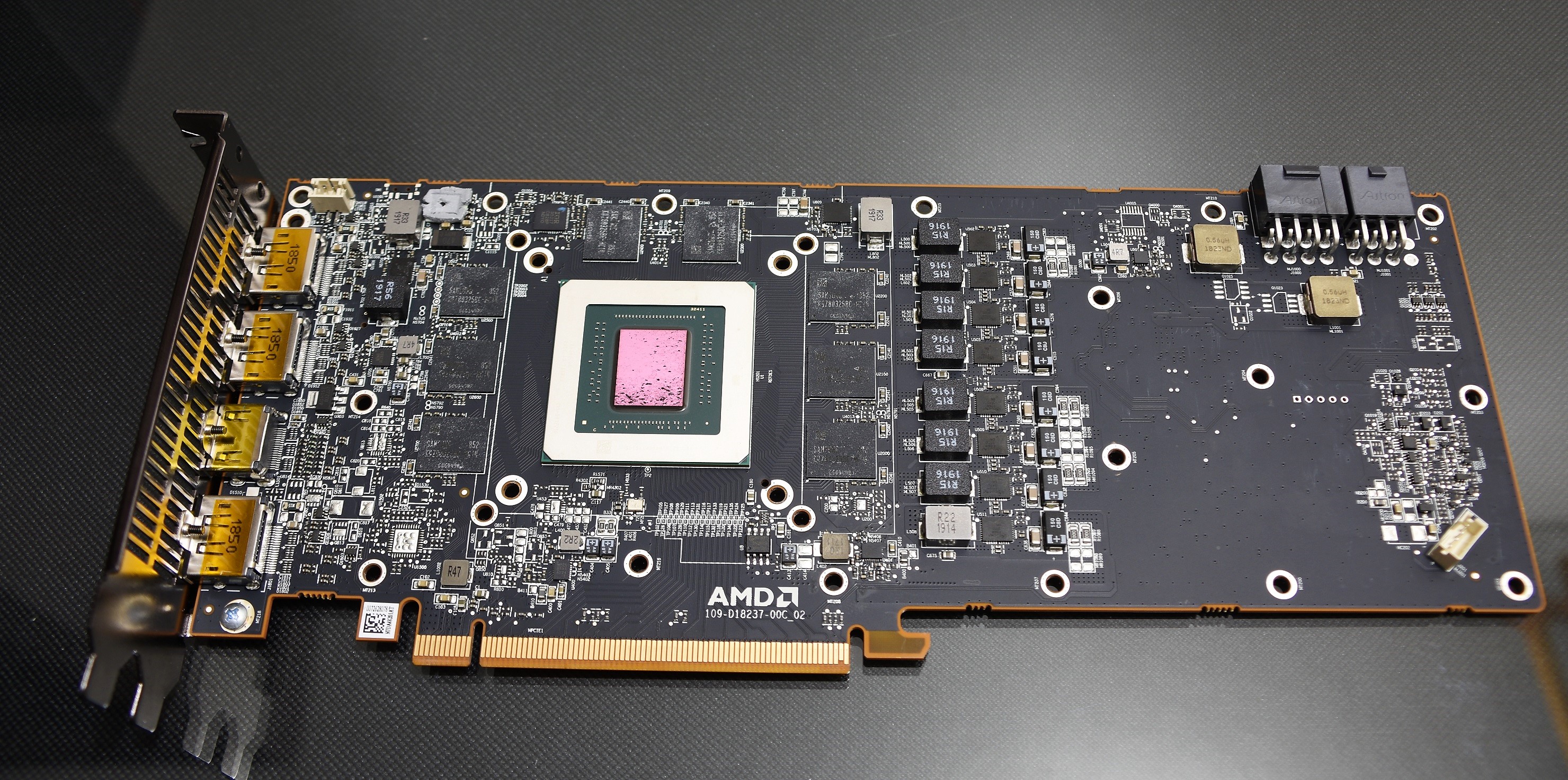
On the front you have this look, you can see a great vacuum in the section where the fan is.
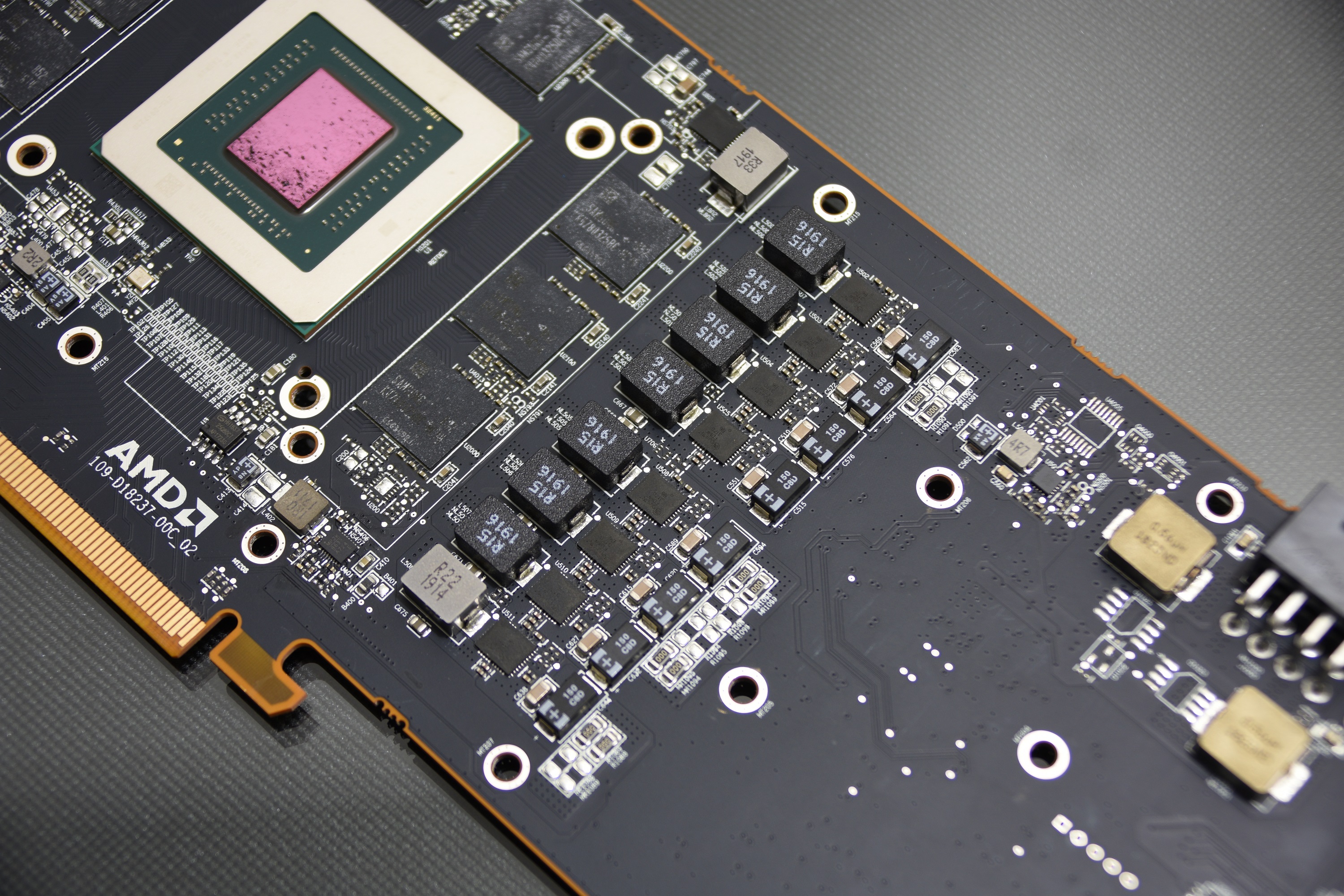
A look at the 7 phases of power (6 + 1), which will regulate the energy towards the GPU and another at the end to the memories.
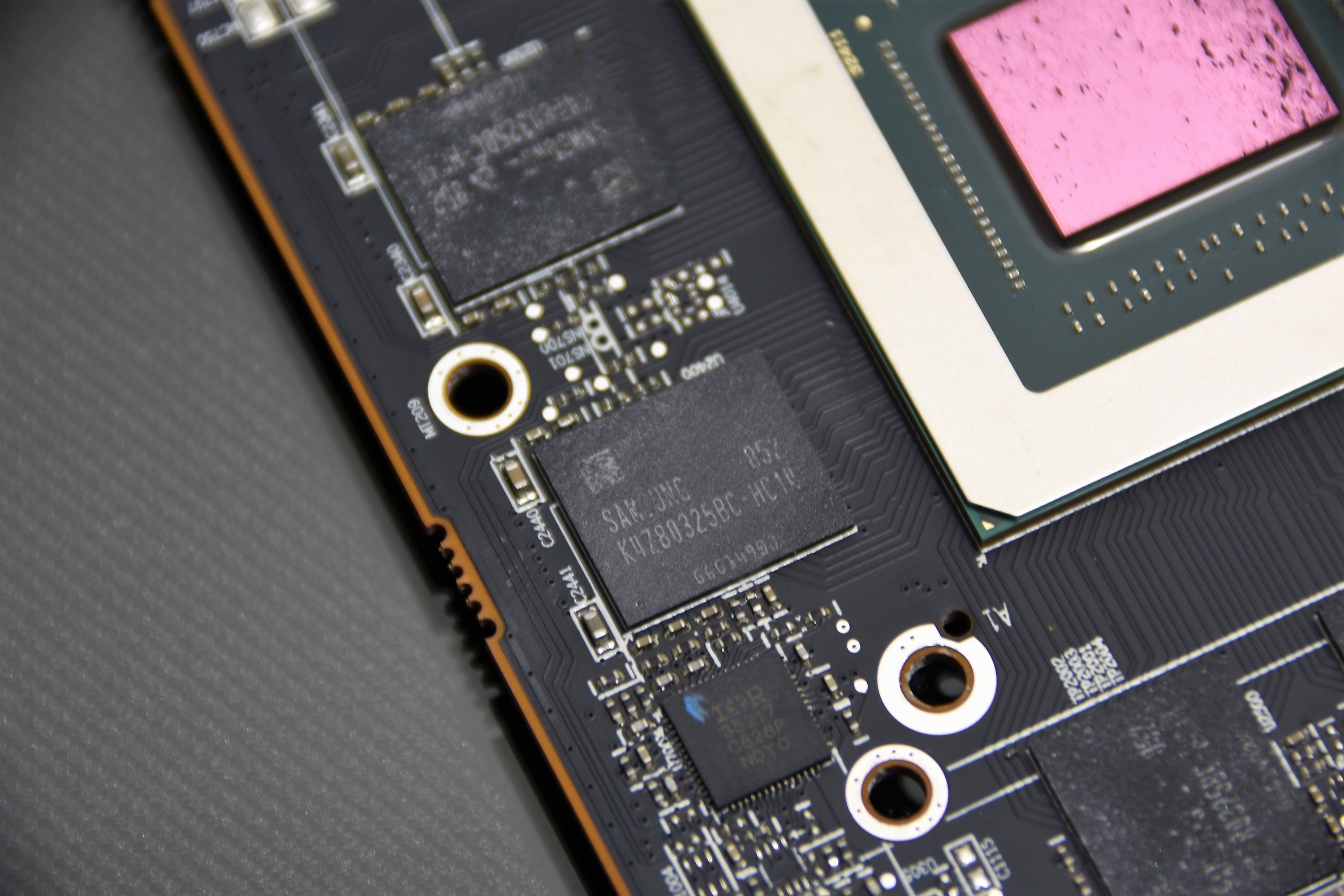
The GDDR6 memories, which in this case are from Samsung (P / N: K4Z80325BC-HC14), of 14Gbps and 8Gb density (1GB each).
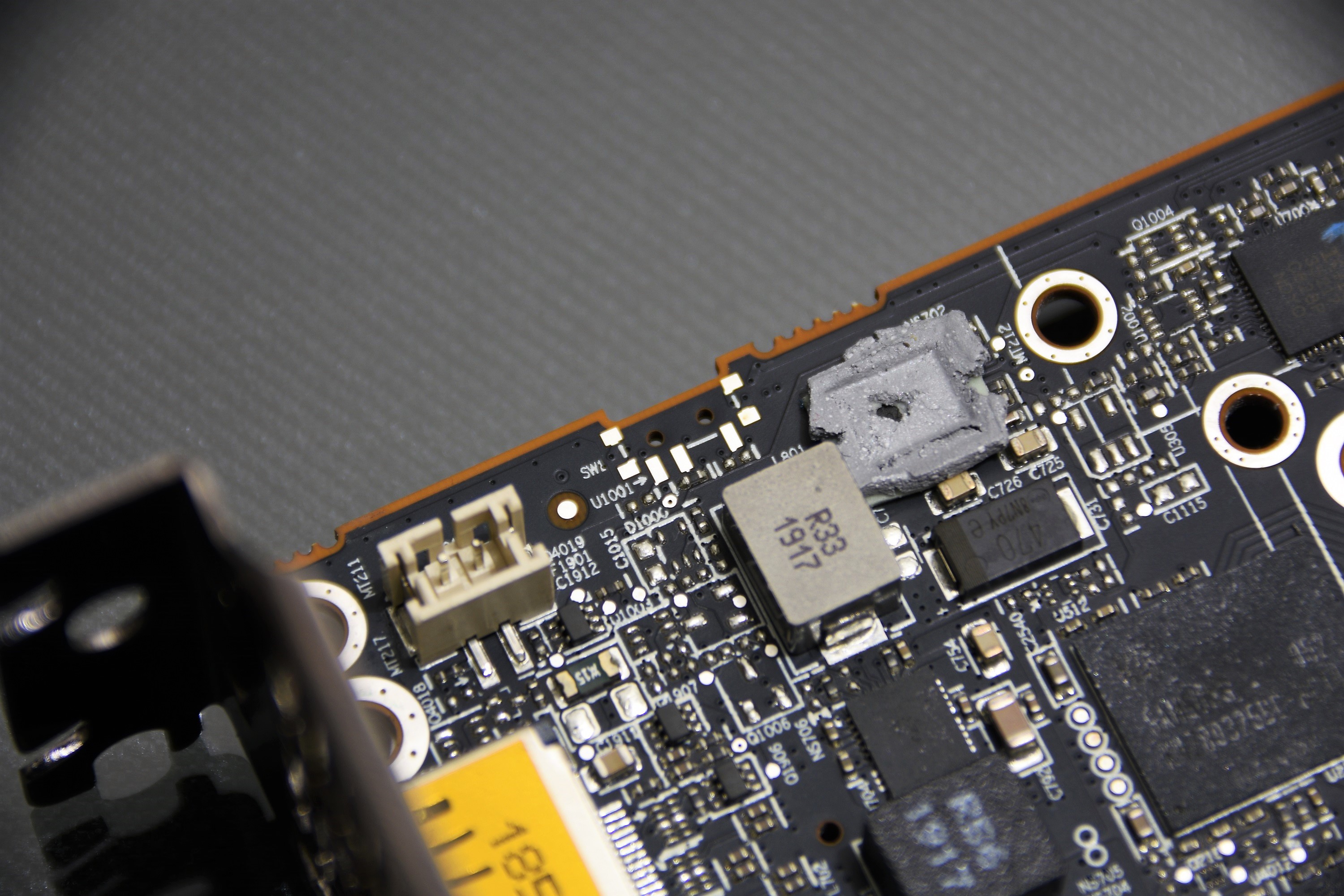
In this place there should come a switch to change vBIOS, most likely the AIB models incorporate one.
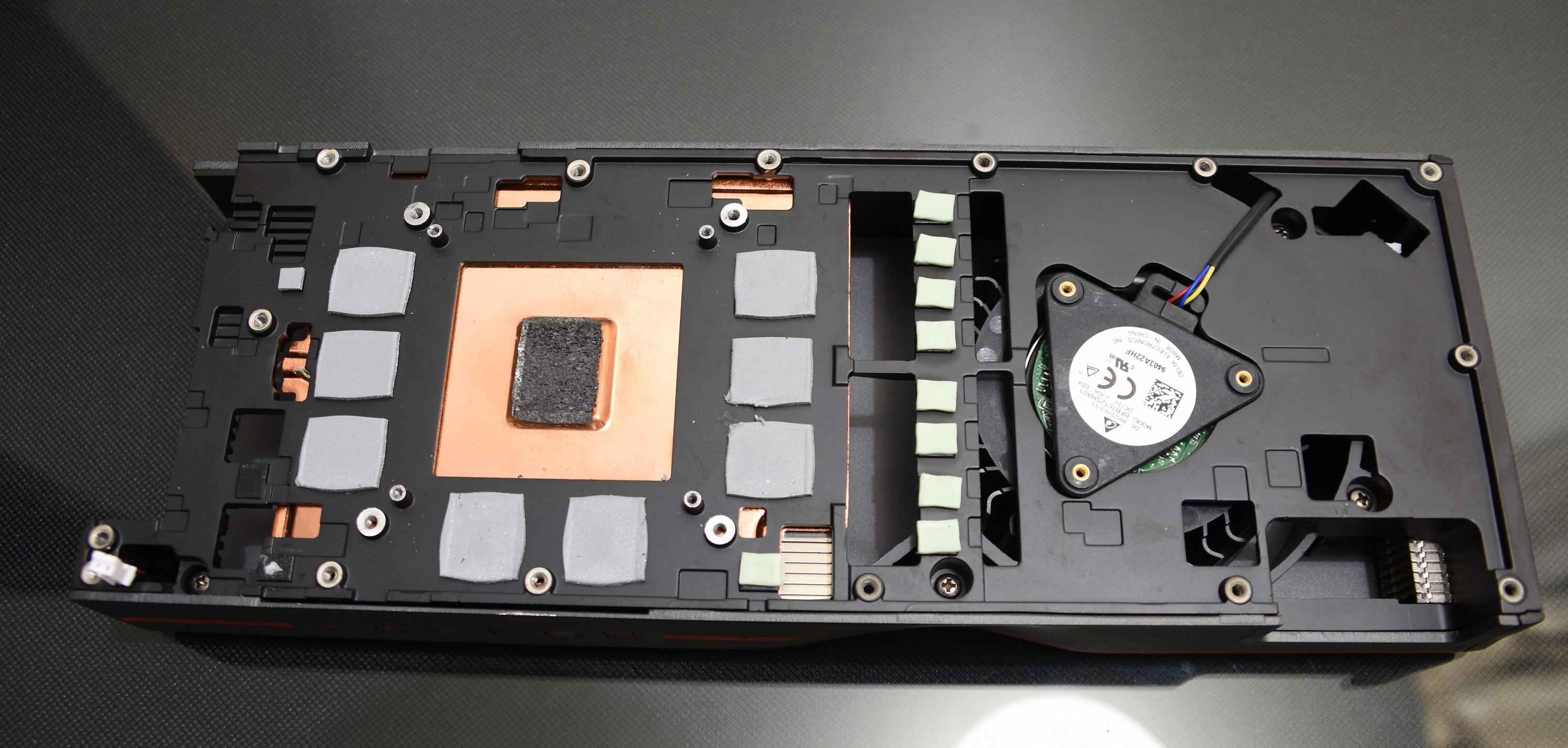
To close, we have this look of the fan contact base. The interior is copper with aluminum fins, having a steam chamber inside.
AMD Radeon RX 5700
Now a look at the younger sister of these cards.
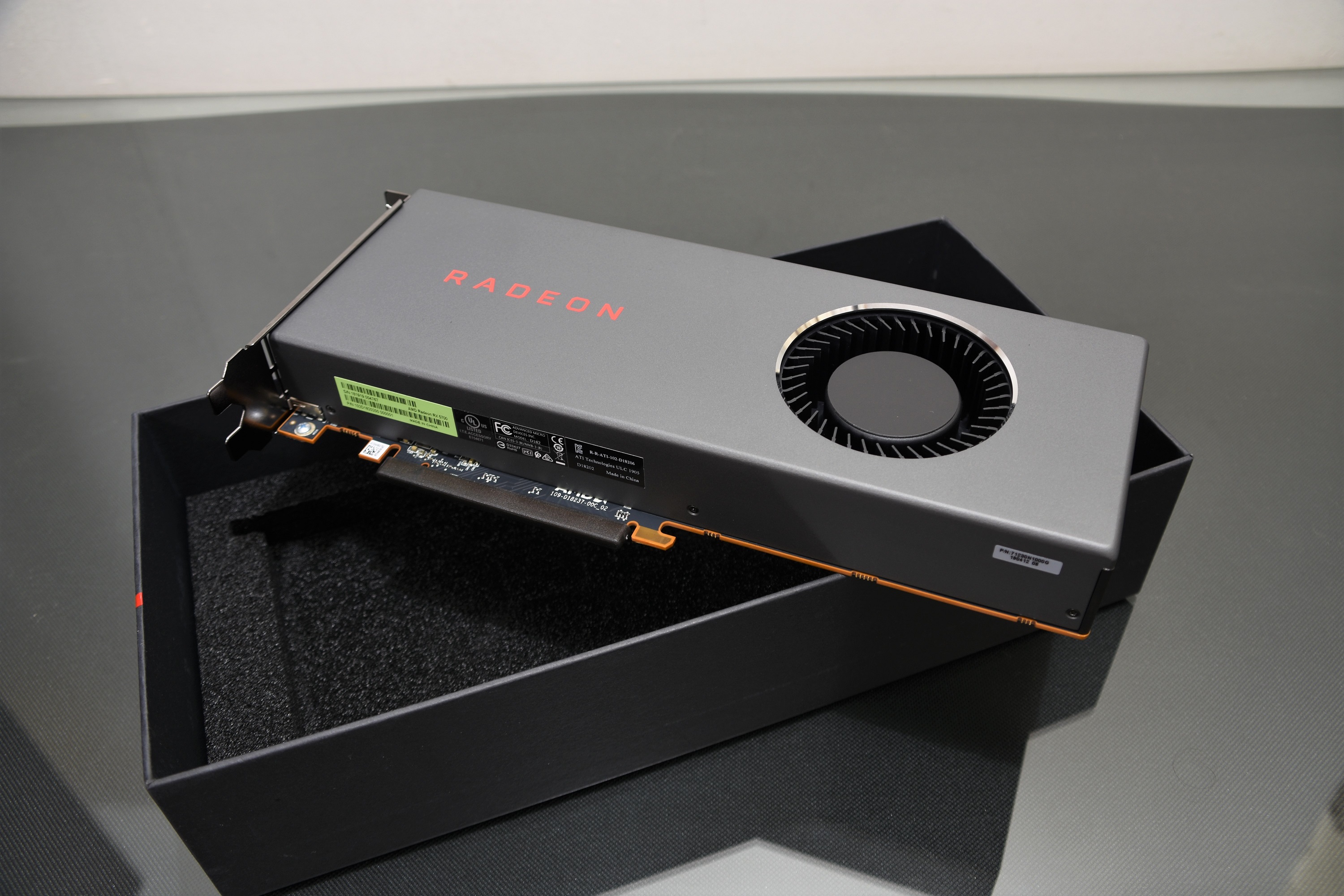
Unlike the previous package, this one is more classic, with the card lying in high density foam inside the box.
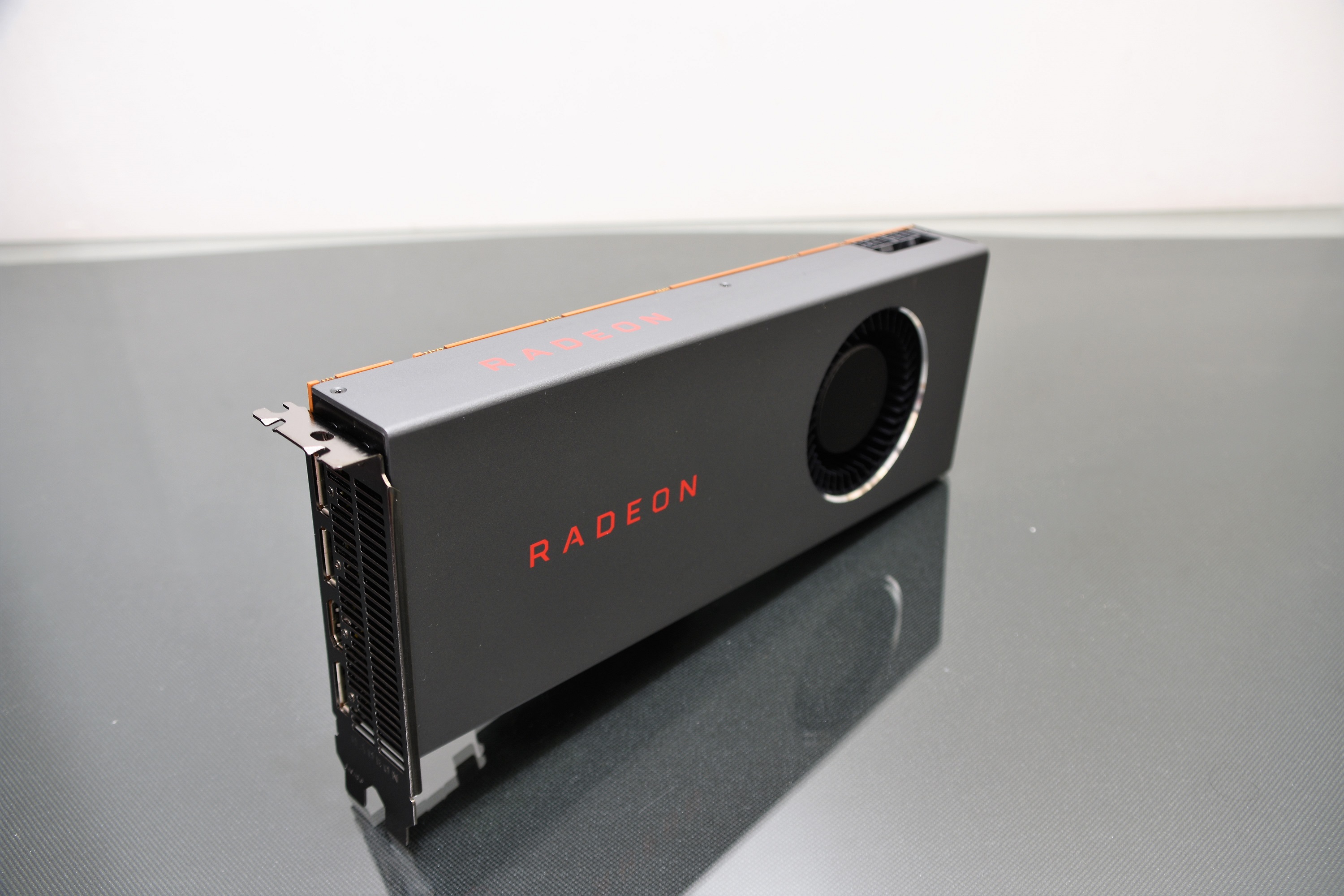
The design of this card is traditional and “boring” smooth rectangle, with a blower fan at its end. Something that we have been seeing from the Radeon RX 400 family onwards, and that was accentuated with the Fiji and later with Vega.
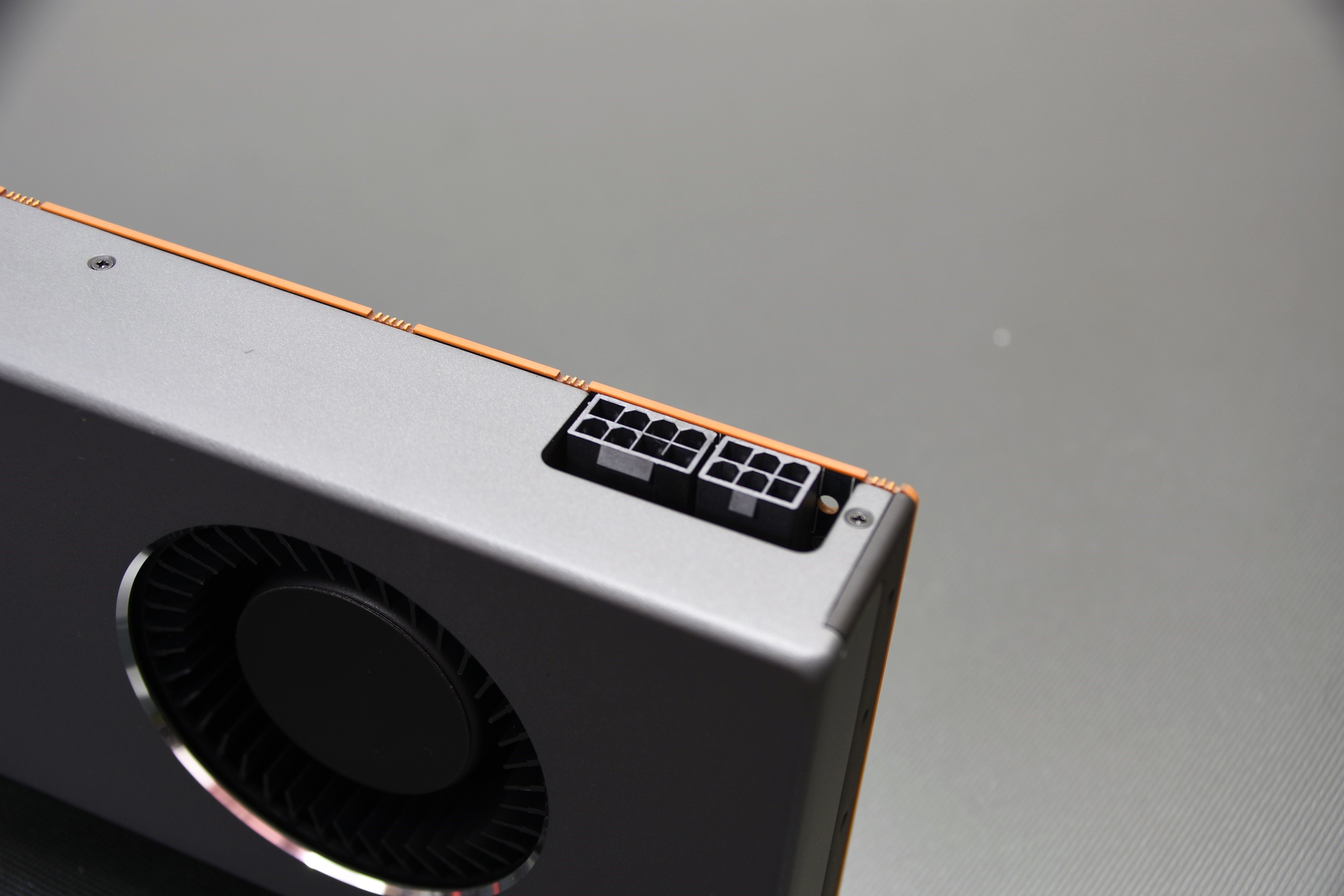
Like the RX 5700XT, it has 2 power connectors (6 + 8 pins), which indicates that this generation is very energy-loving.
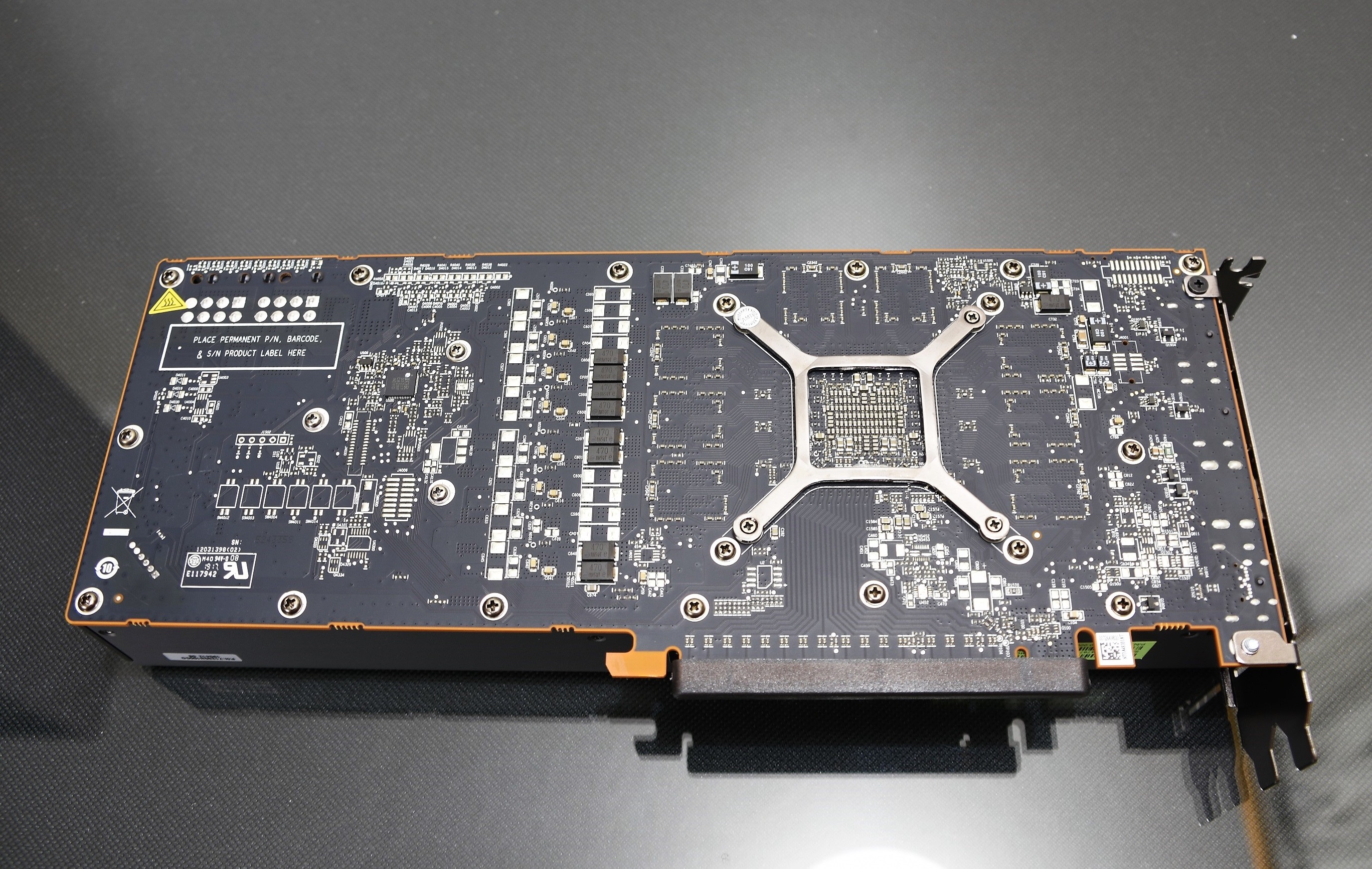
Unlike the RX 5700XT, it does not have a backplate. However, the PCB is practically the same.
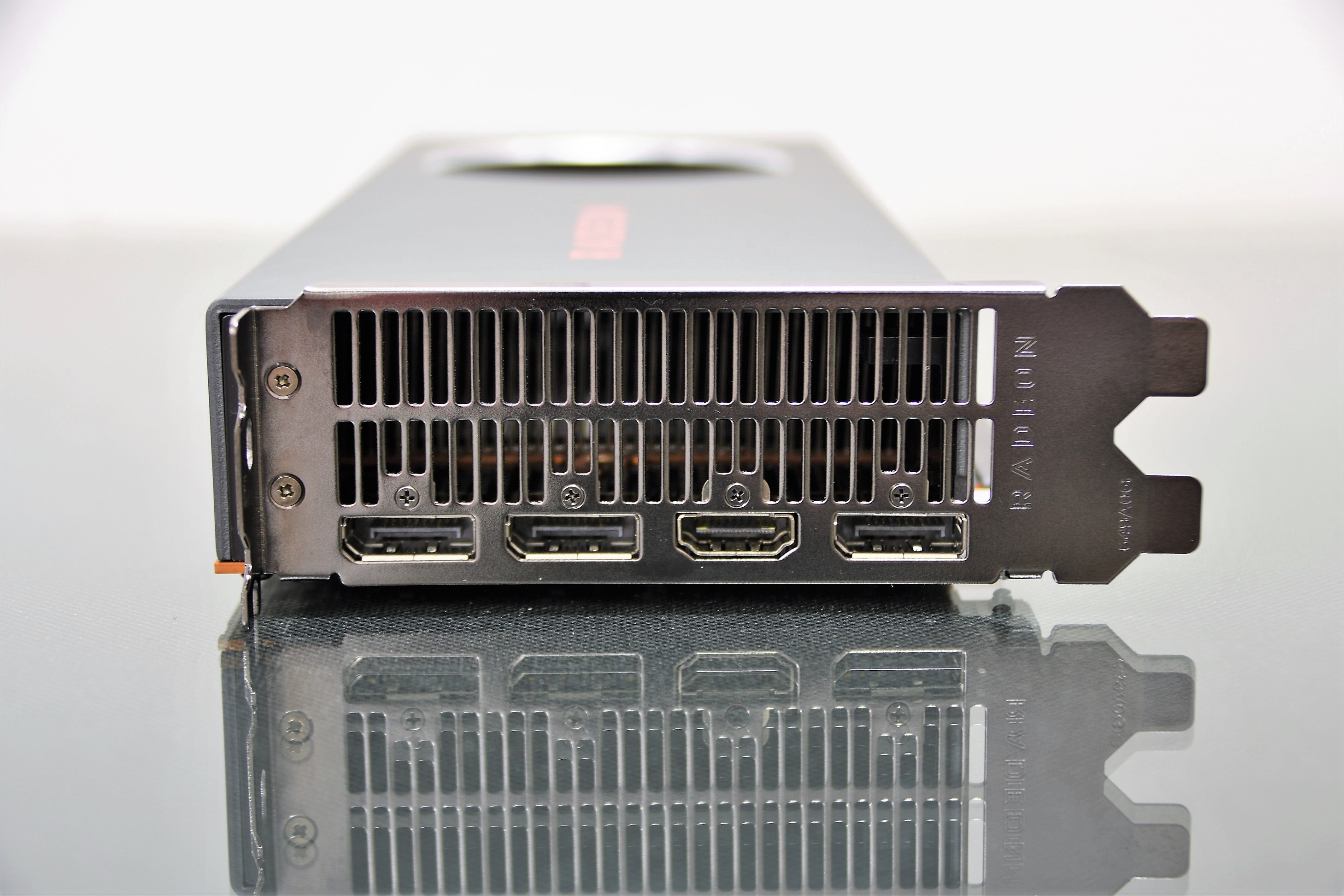
There is not much difference here, you have the same connectors (3x DisplayPort 1.4 HDR and 1x HDMI 2.0b), in addition to the ventilation grill.
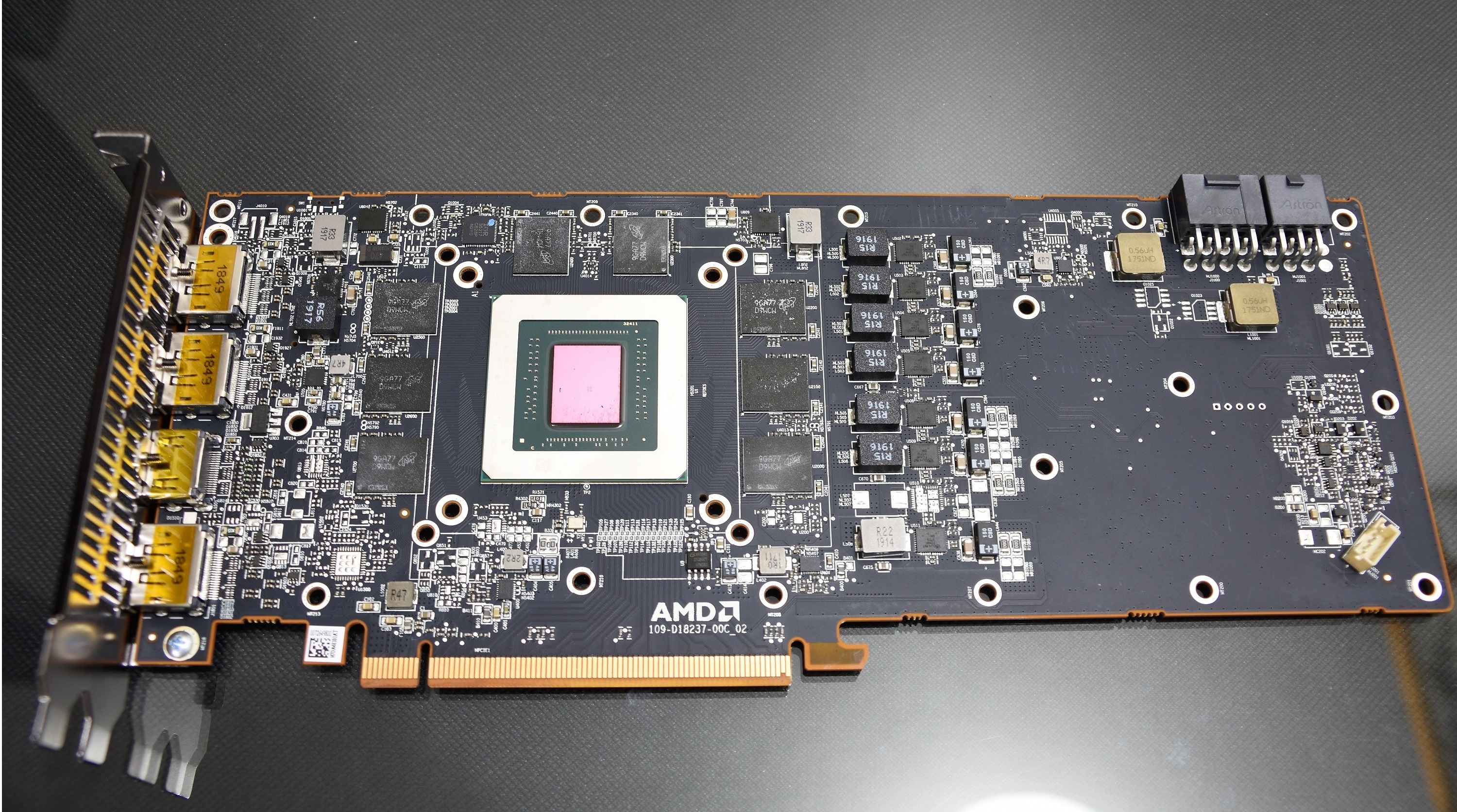
As we mentioned, the PCB is the same on both cards. In this case the difference is given in the phases of power.
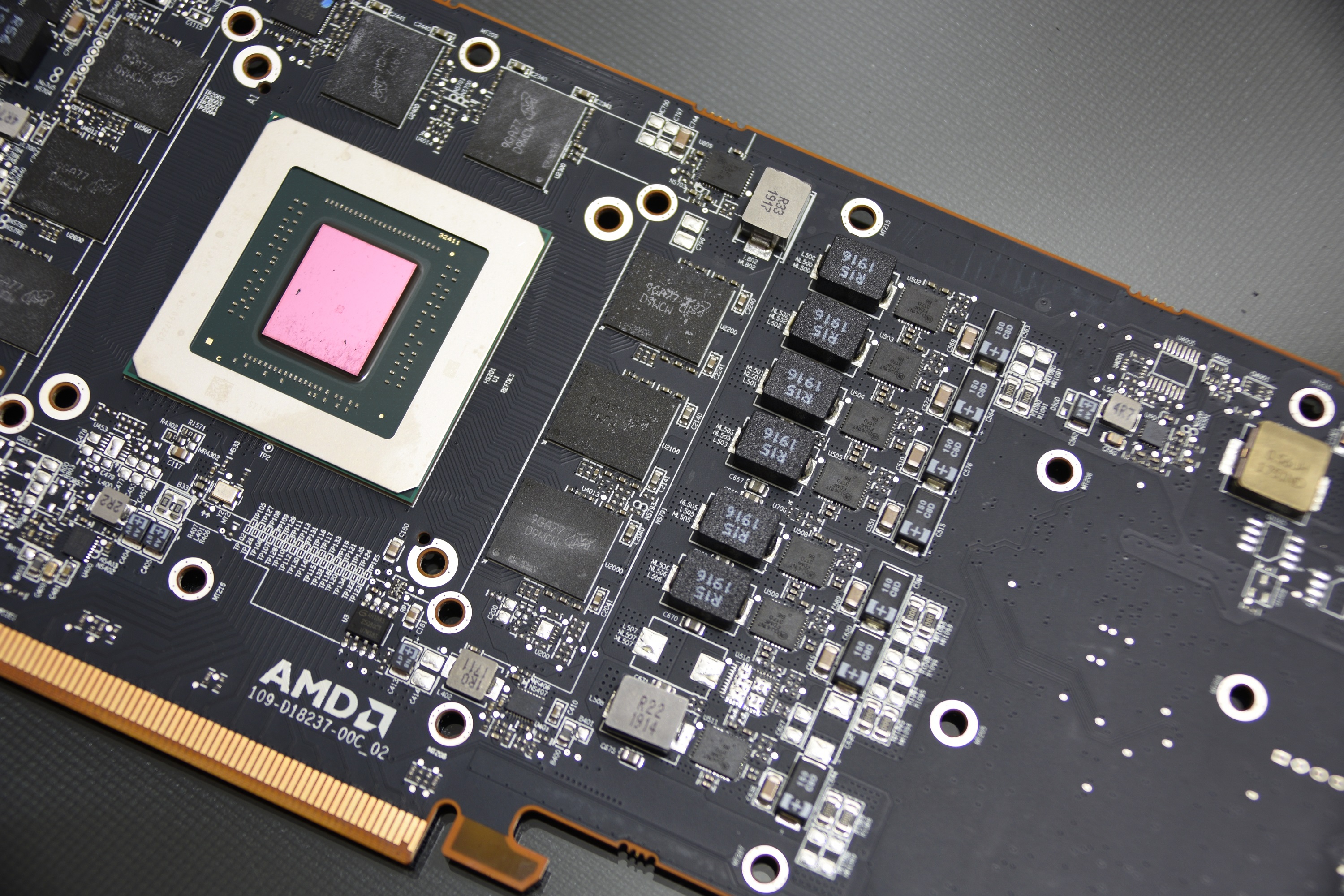
This card has 6 phases of power, one less than the XT. Everything else stays the same.
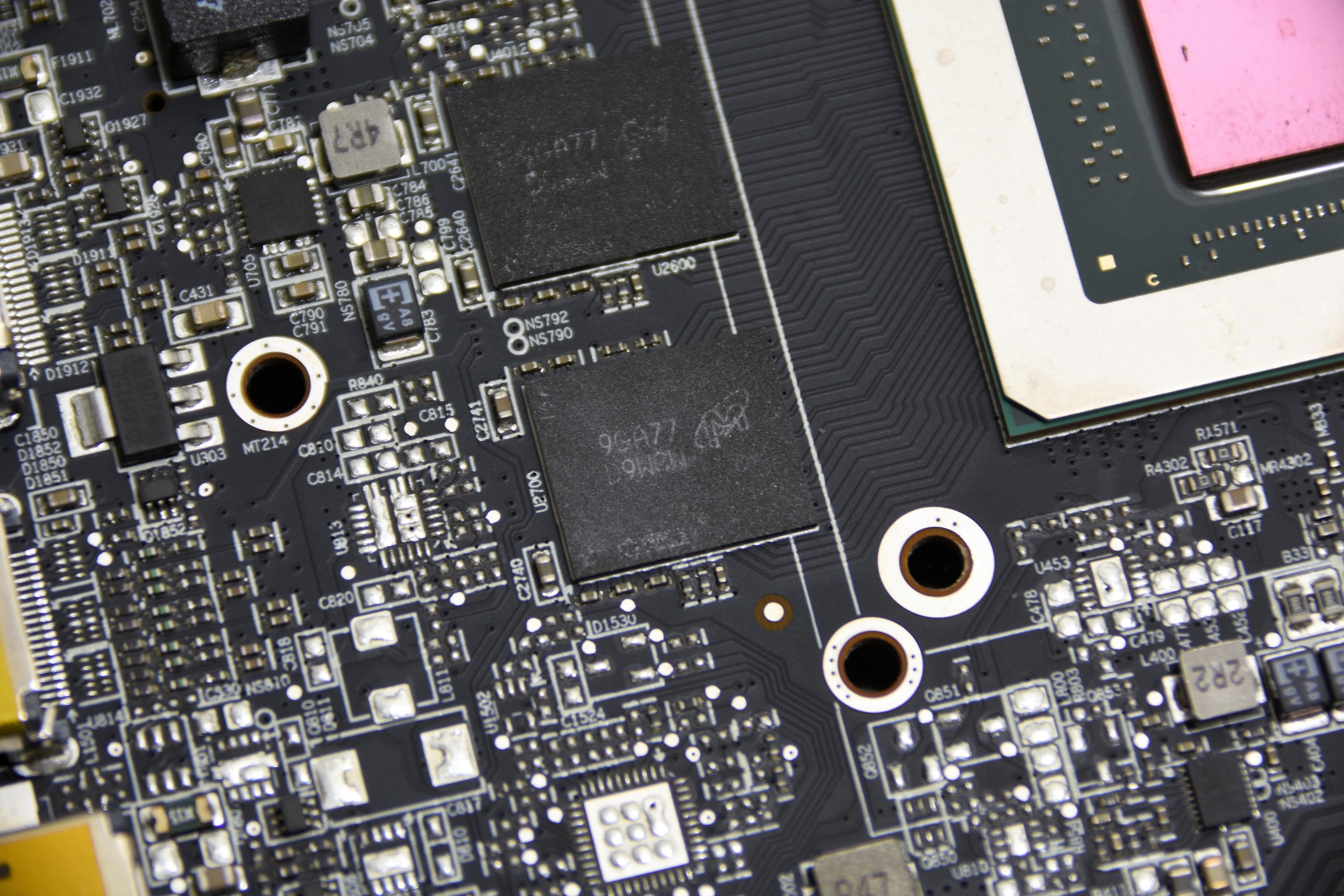
The memories in this Radeon RX 5700 are micron (FBGA Code: D9WCW) of 14Gbps and 8Gb (1GB) of density each.
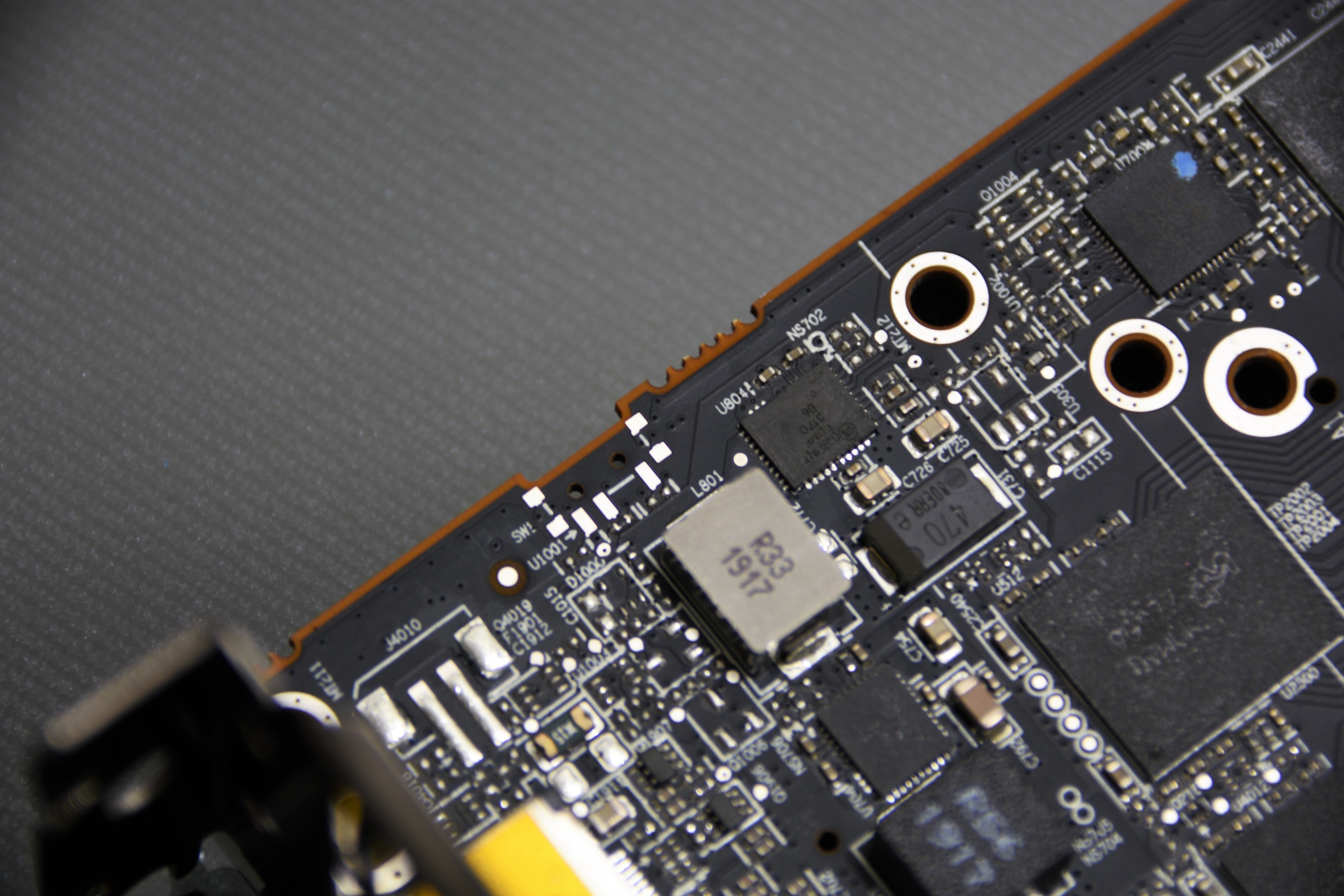
As they share PCBs, it also has the space for the vBIOS switch.

Everything stays the same compared to its sister, a copper base system with steam chamber, and aluminum fins.
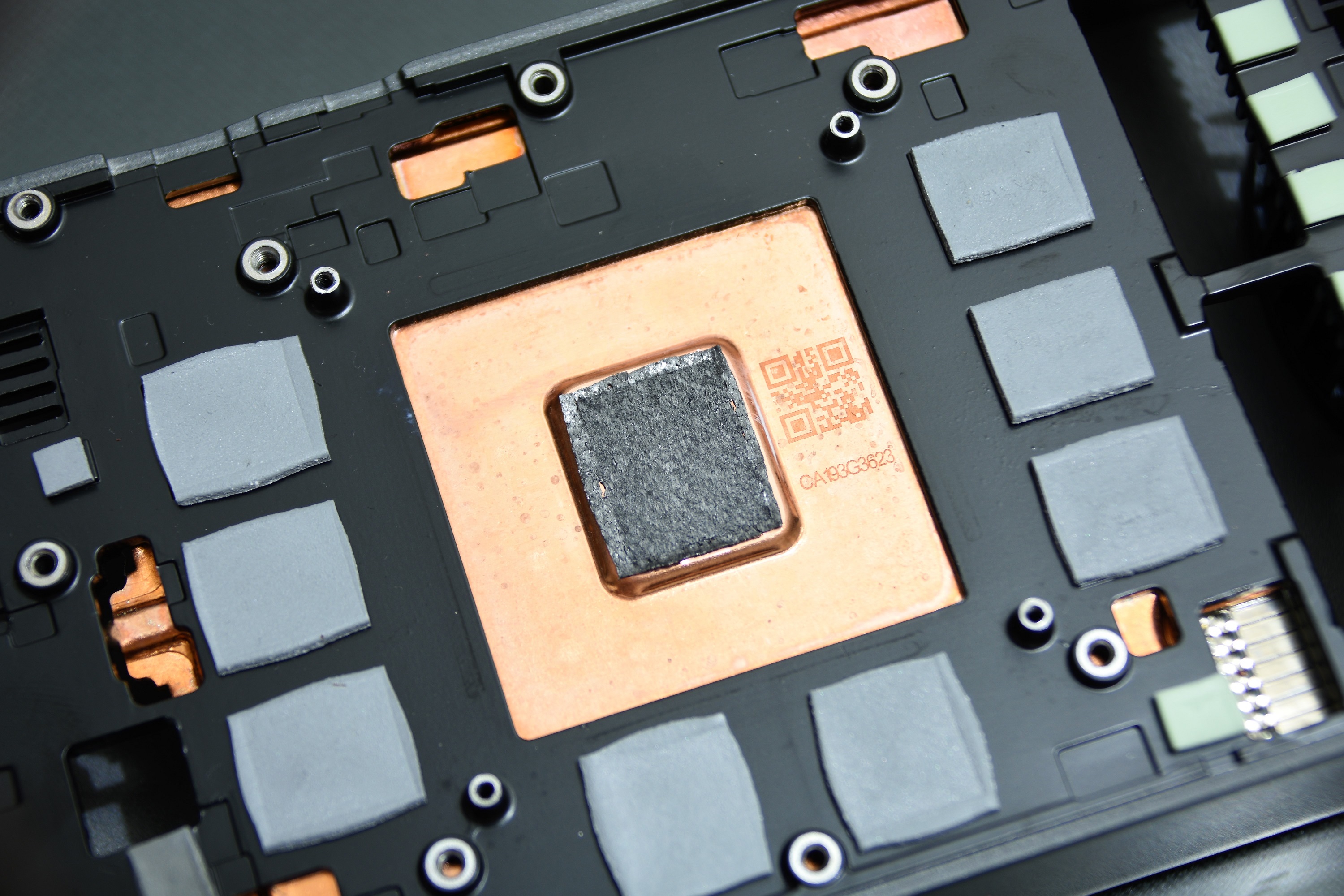
An approach to the copper base, with the thermal paste applied. The terminals of the steam chamber heatlanes are visible on the far left.
Testing and Methodology Platform.
| Test Platform | |
|---|---|
| Processor | – Intel Core i7 8086K |
| Motherboard | – ASUS ROG MAXIMUS X APEX |
| Memories | – G. Skill TridentZ 3200MHz 2x8GB |
| Refrigeration | – EK-XLC Predator 240 |
| Graphics card | – AMD Radeon RX 5700XT – AMD Radeon RX 5700 |
| Power supply | – Corsair RM1000X |
| Storage | – SAMSUNG 960PRO 512GB M.2 |
| Monitor | – ASUS MG28UQ |
- Windows 10 Pro x64 operating system [Update 1903].
- The tests were performed in an environment with a temperature of approximately 25 ° C.
- The platform was used without a cabinet.
- The drivers used for Radeon graphics cards: 19.30.01.09-Adrenalin-19.71-July4
- The resolutions of the synthetic tests are the default ones for each of the benchmarks.
- The real test resolutions are 1920 × 1080 and 3820 × 2160 with all the maximum available graphics in each game.
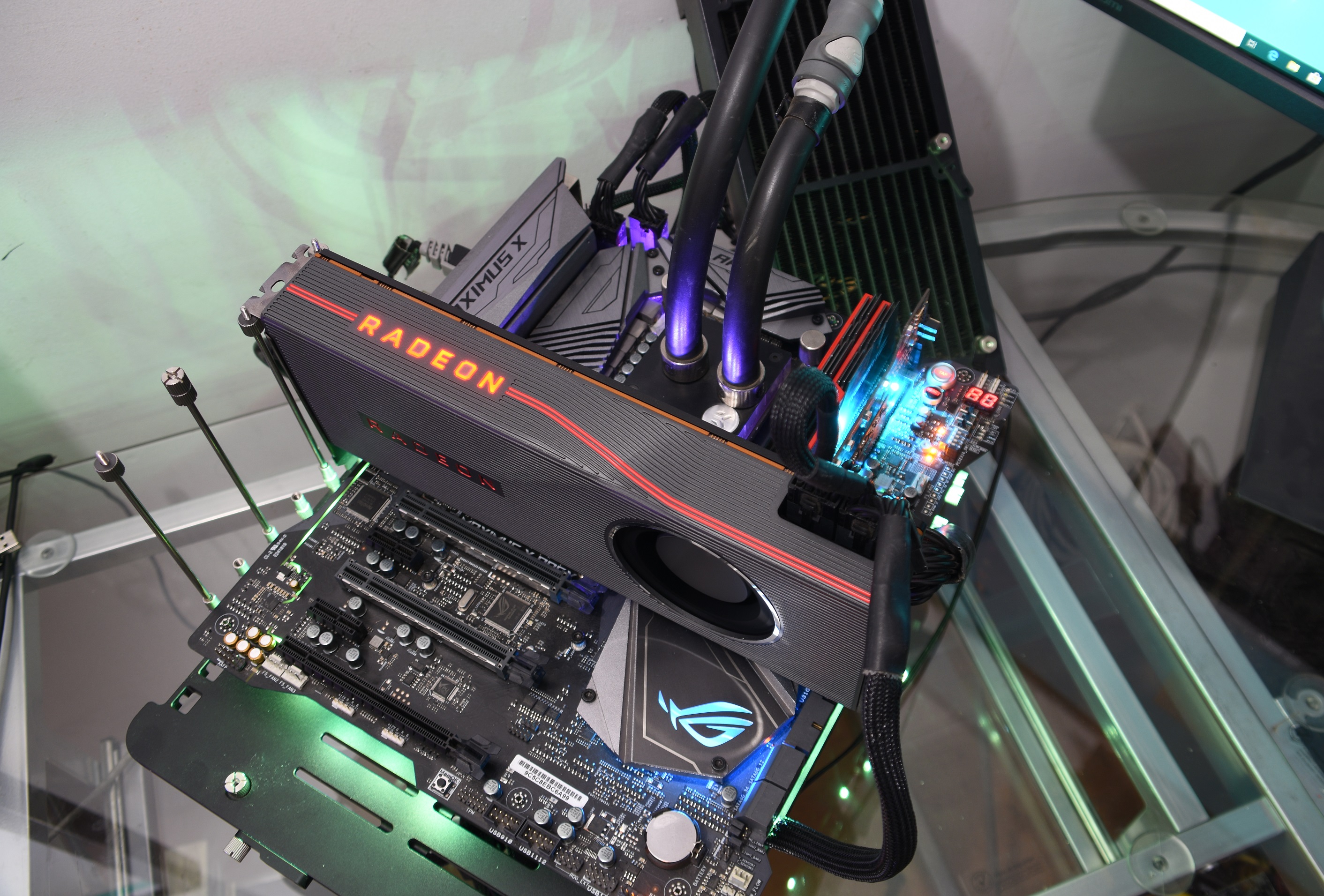
A panoramic photo of the test platform.
Synthetic tests
First, the classic synthetic tests, which serve as a standard comparison for all cards.
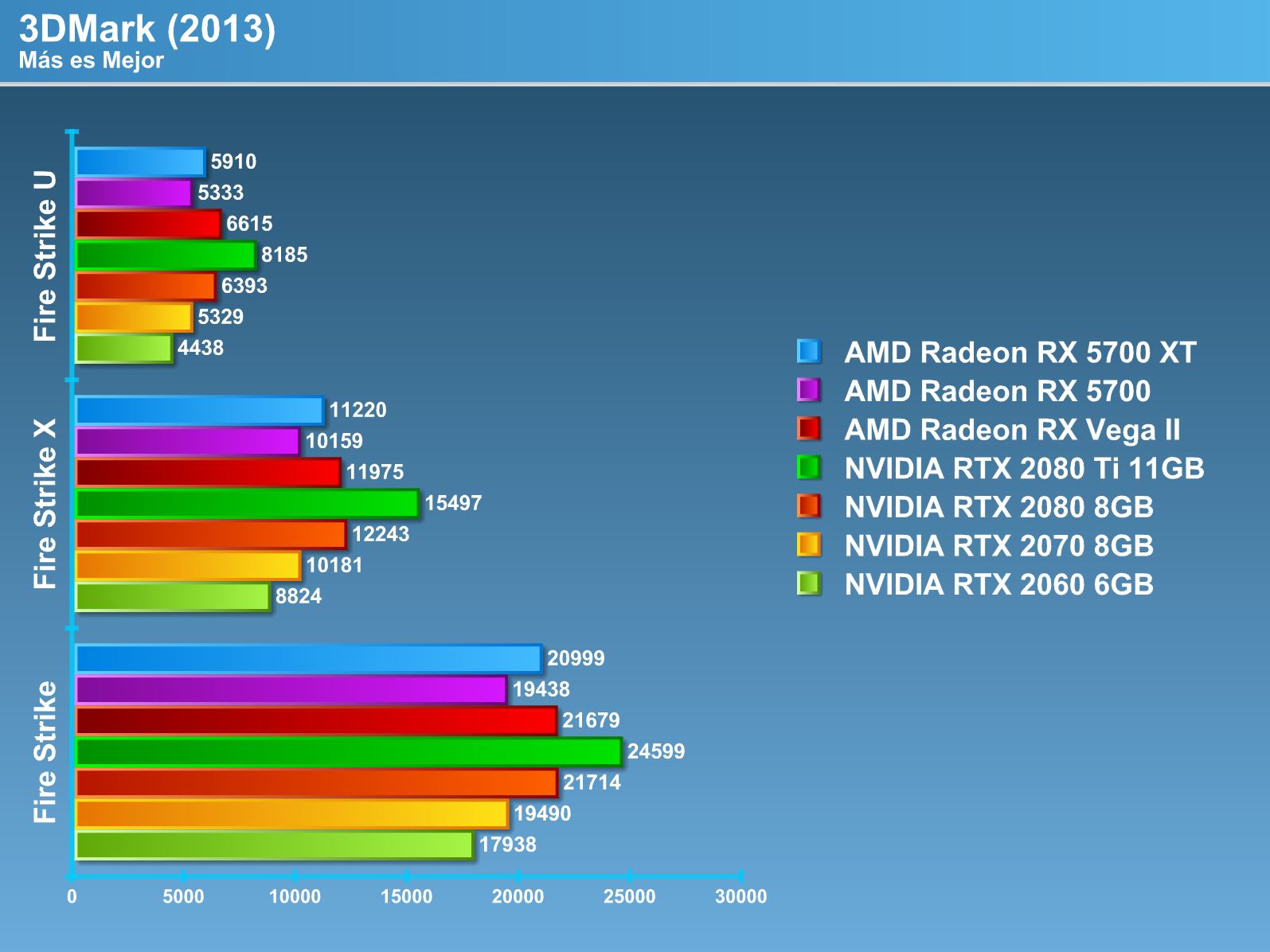
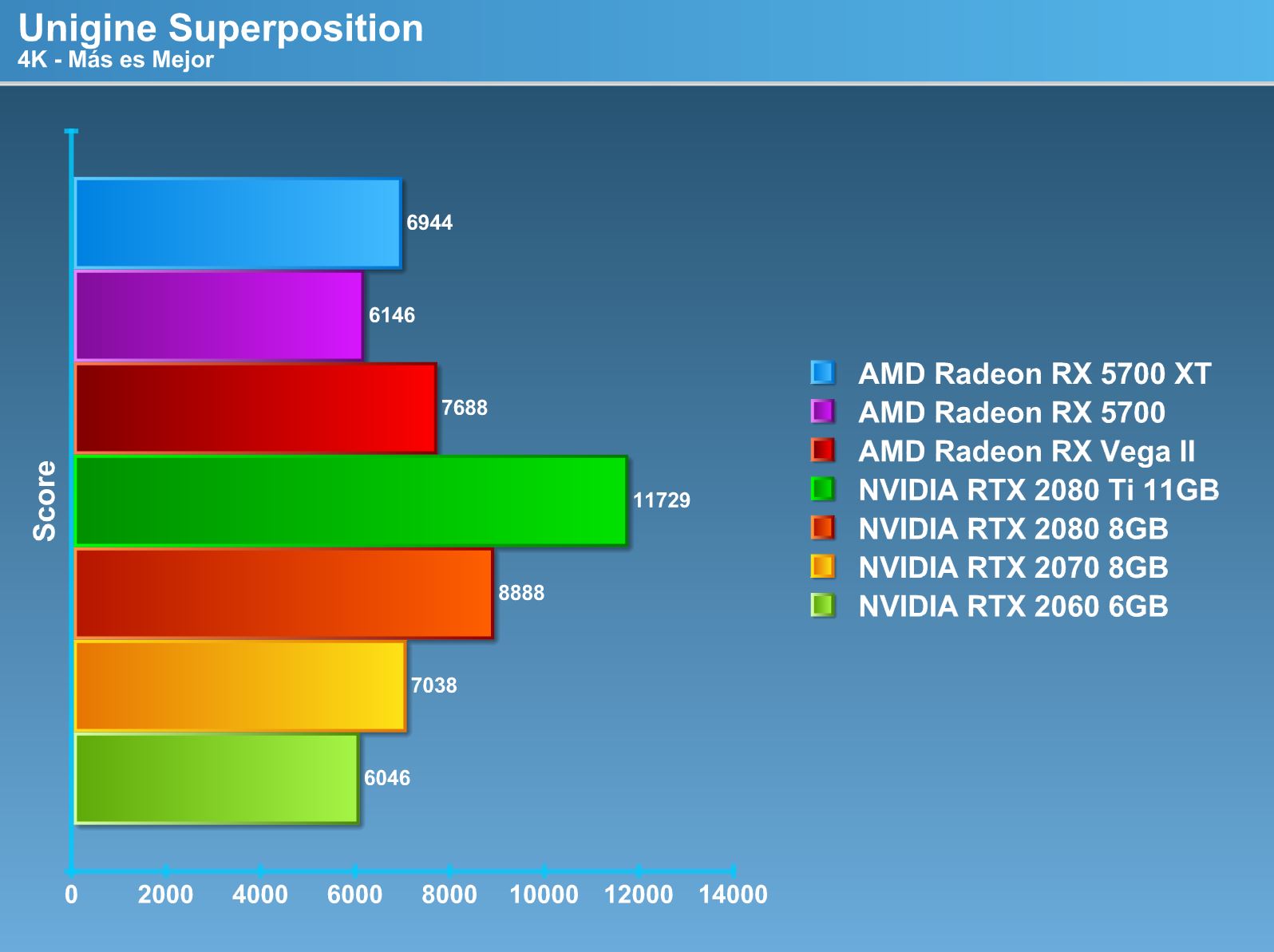
You can clearly see the steps in each segment and where the RX 5700XT goes directly against the RTX 2070.
Real tests
The games are the ones who will tell us the truth of the performance of these new video cards.
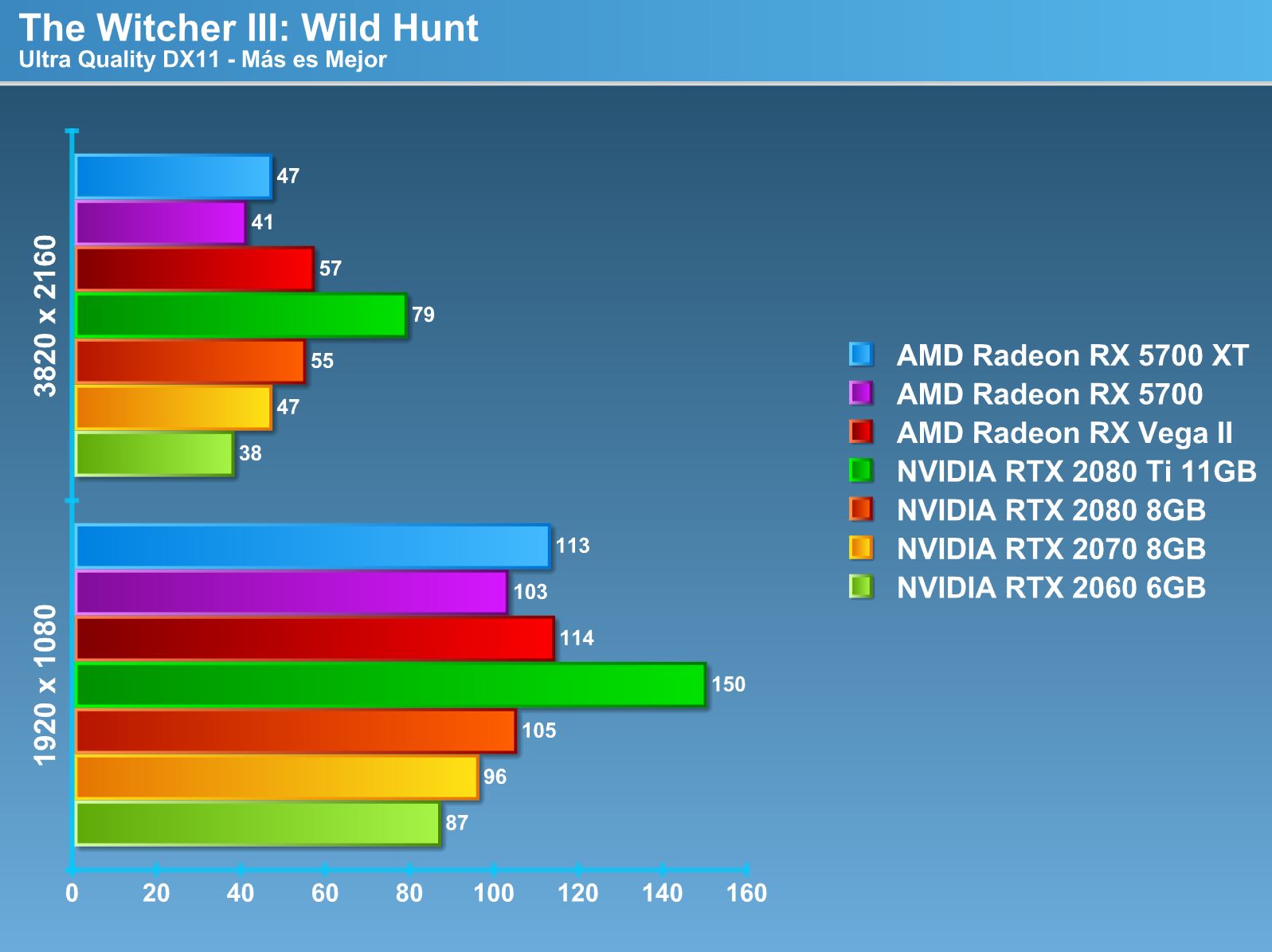
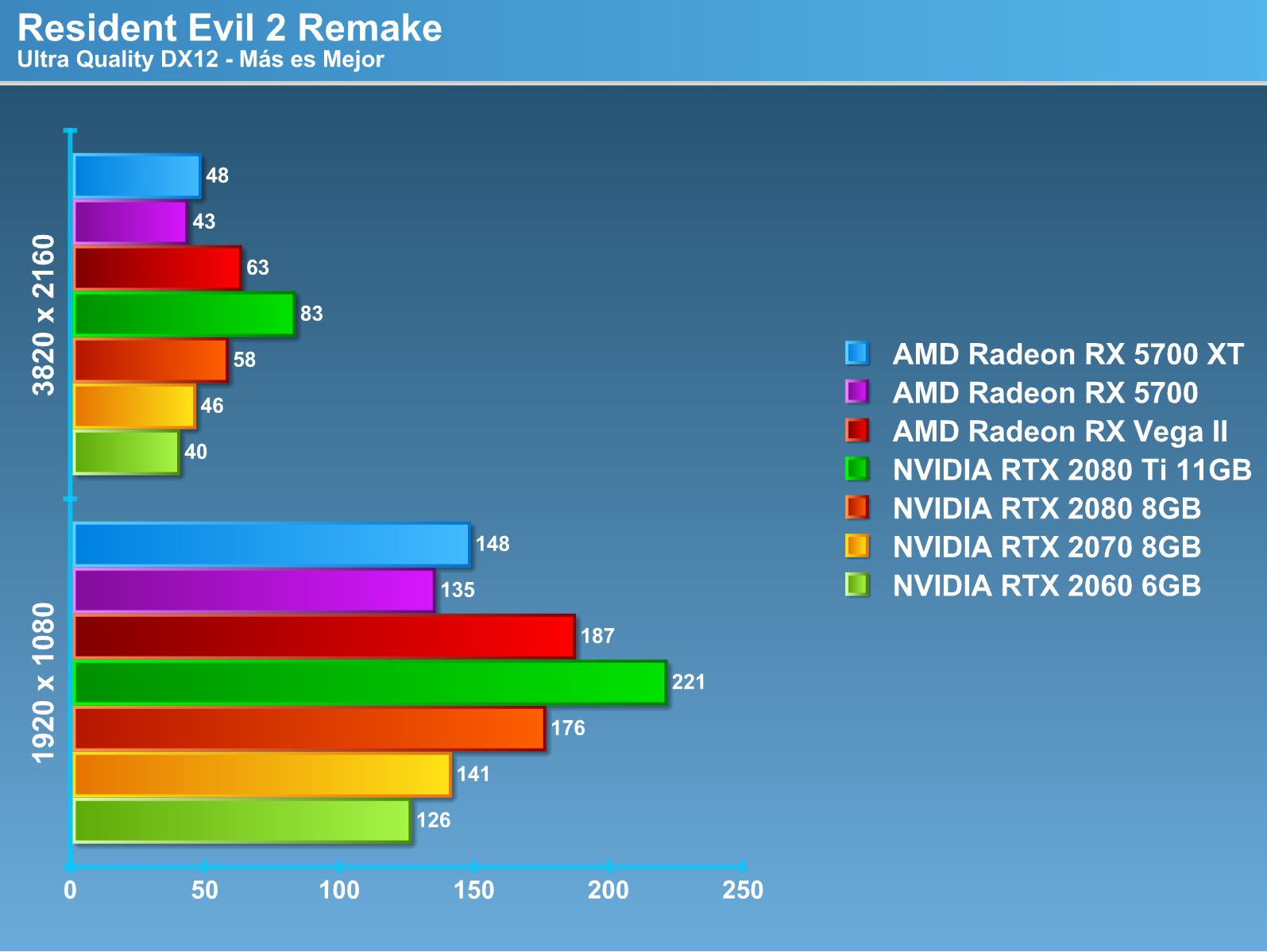
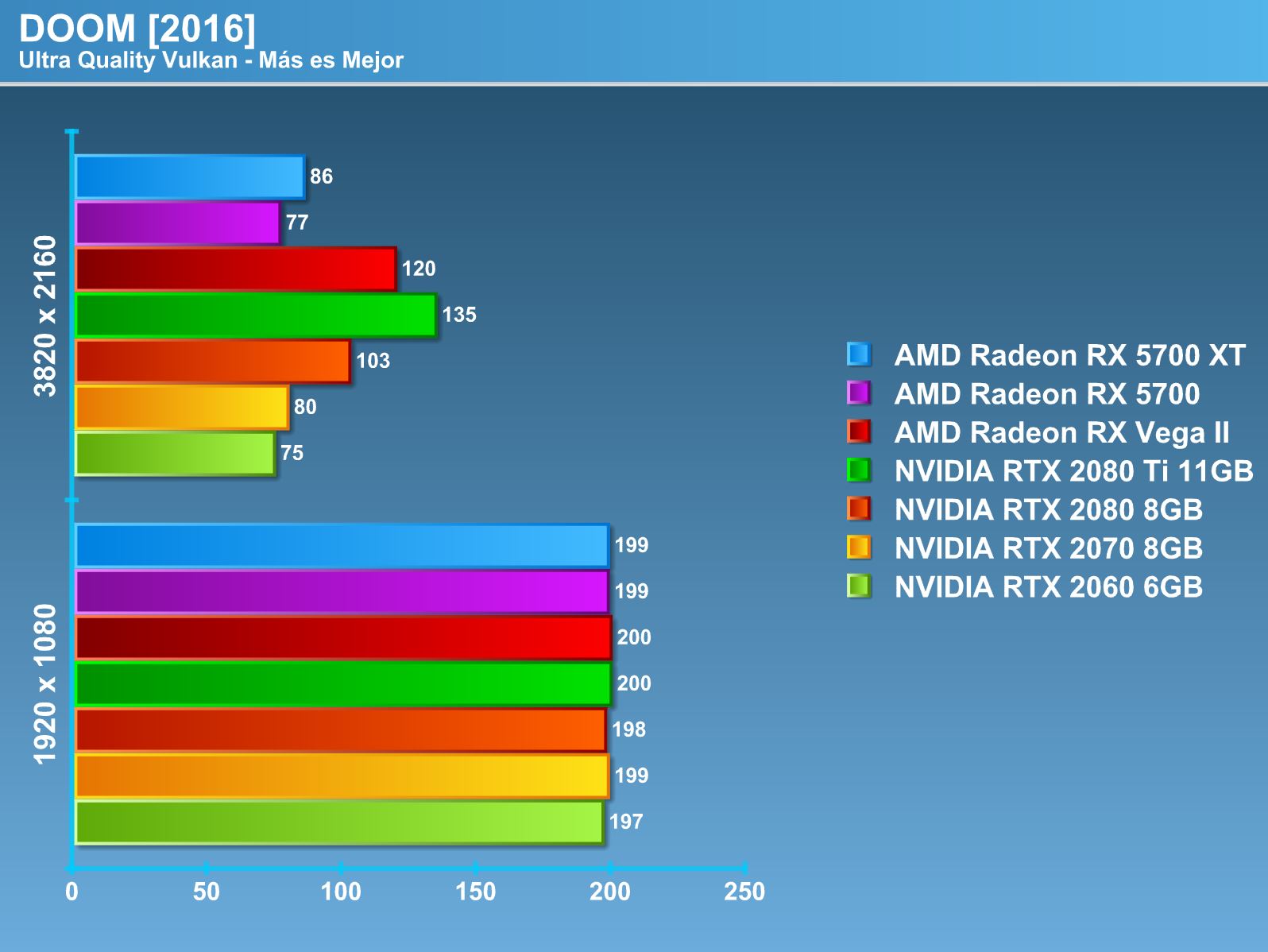
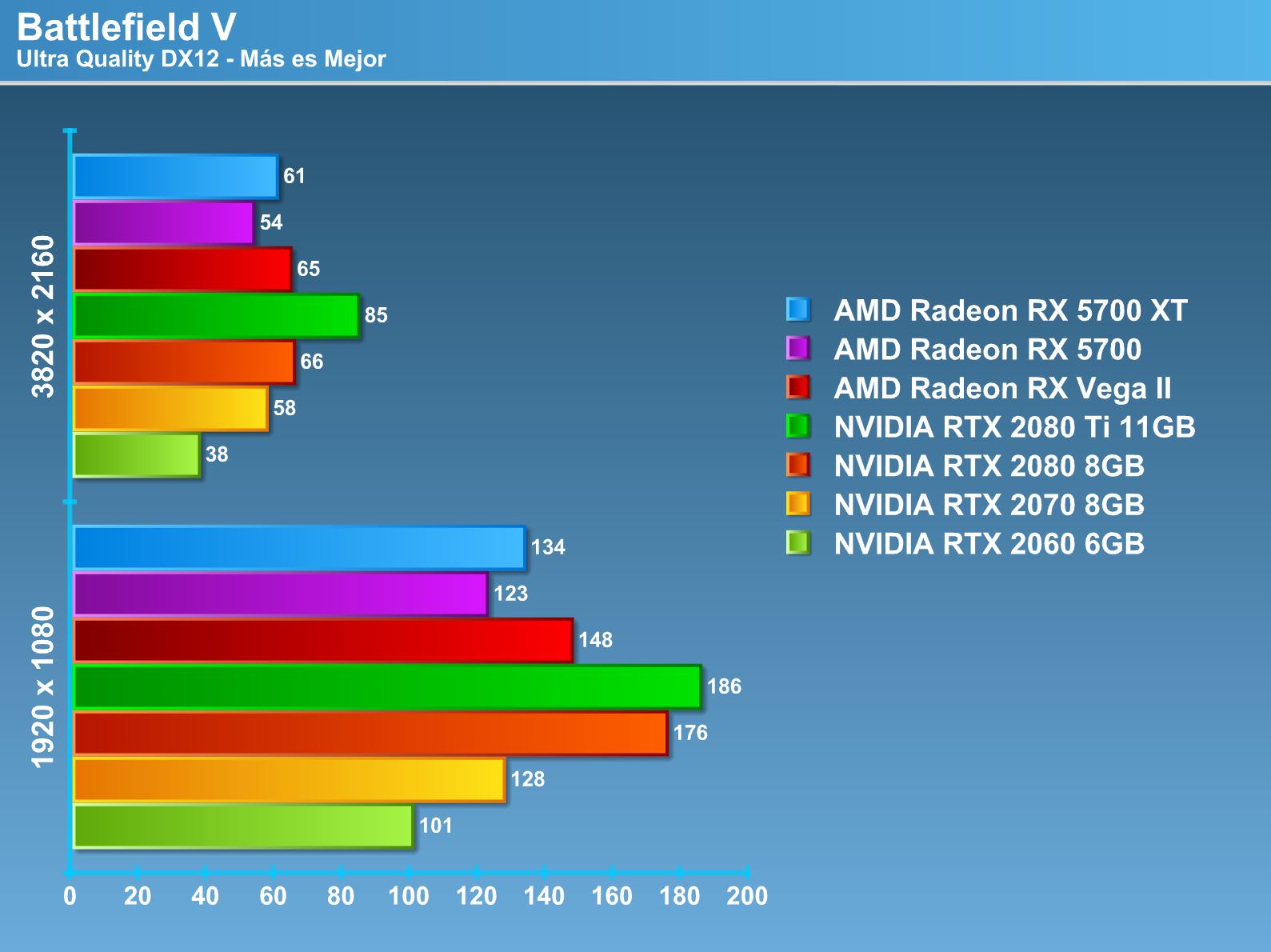
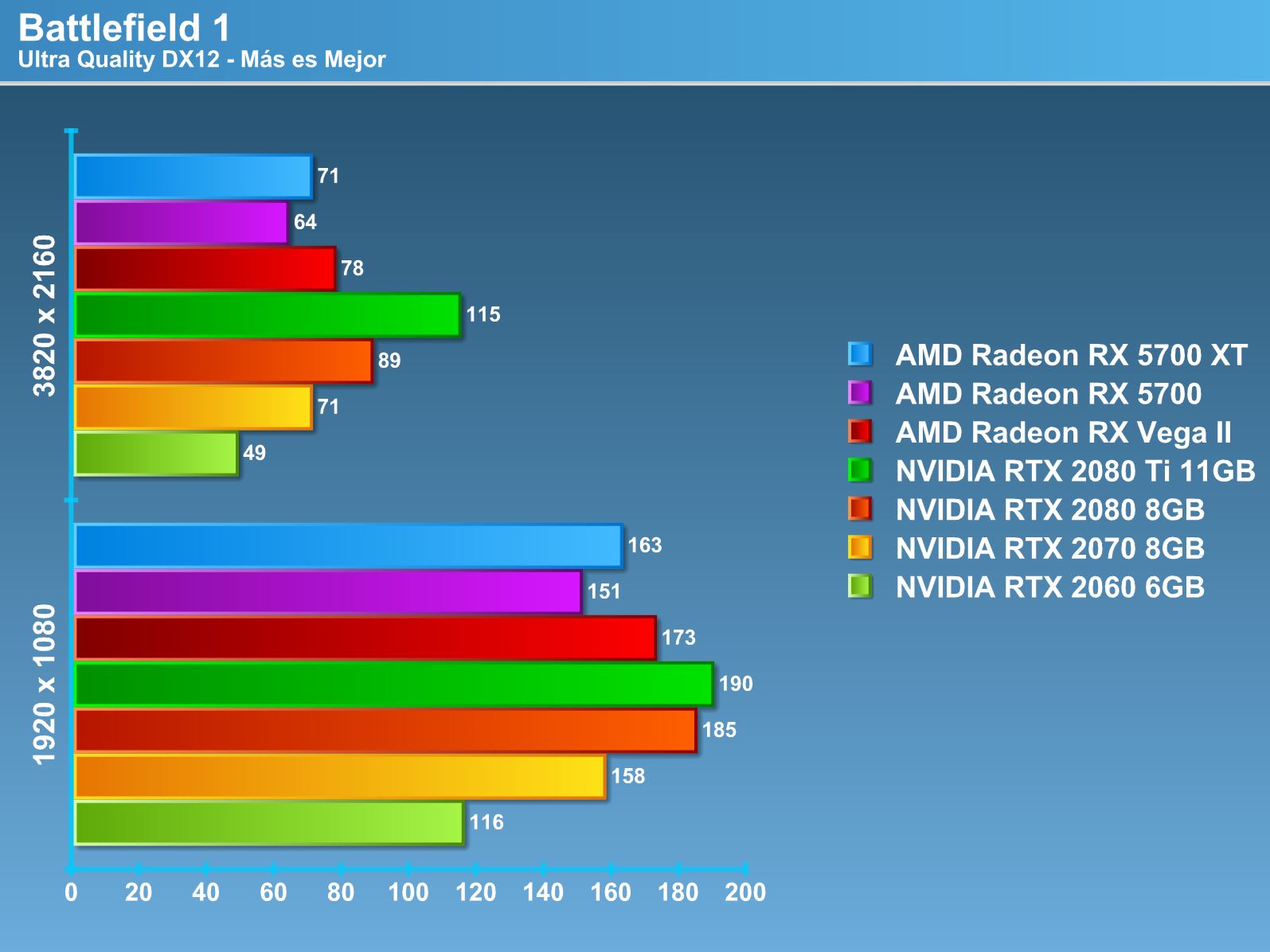
Again you have that the RX 5700XT goes against the RTX 2070, just as the RX 5700 exceeds the RTX 2060. In any case, in some cases the difference is not so great, but still offers slightly more performance than these.
Temperature and consumption.
Good many know that this section for AMD Radeon does not feel good, in the latest generations of video cards, especially in its mid-high range. Now the new technologies with which this new series is launched Radeon Navi brings a second experience with an architecture based on 7nm, so under this manufacturing process we should already see some expertise from AMD.
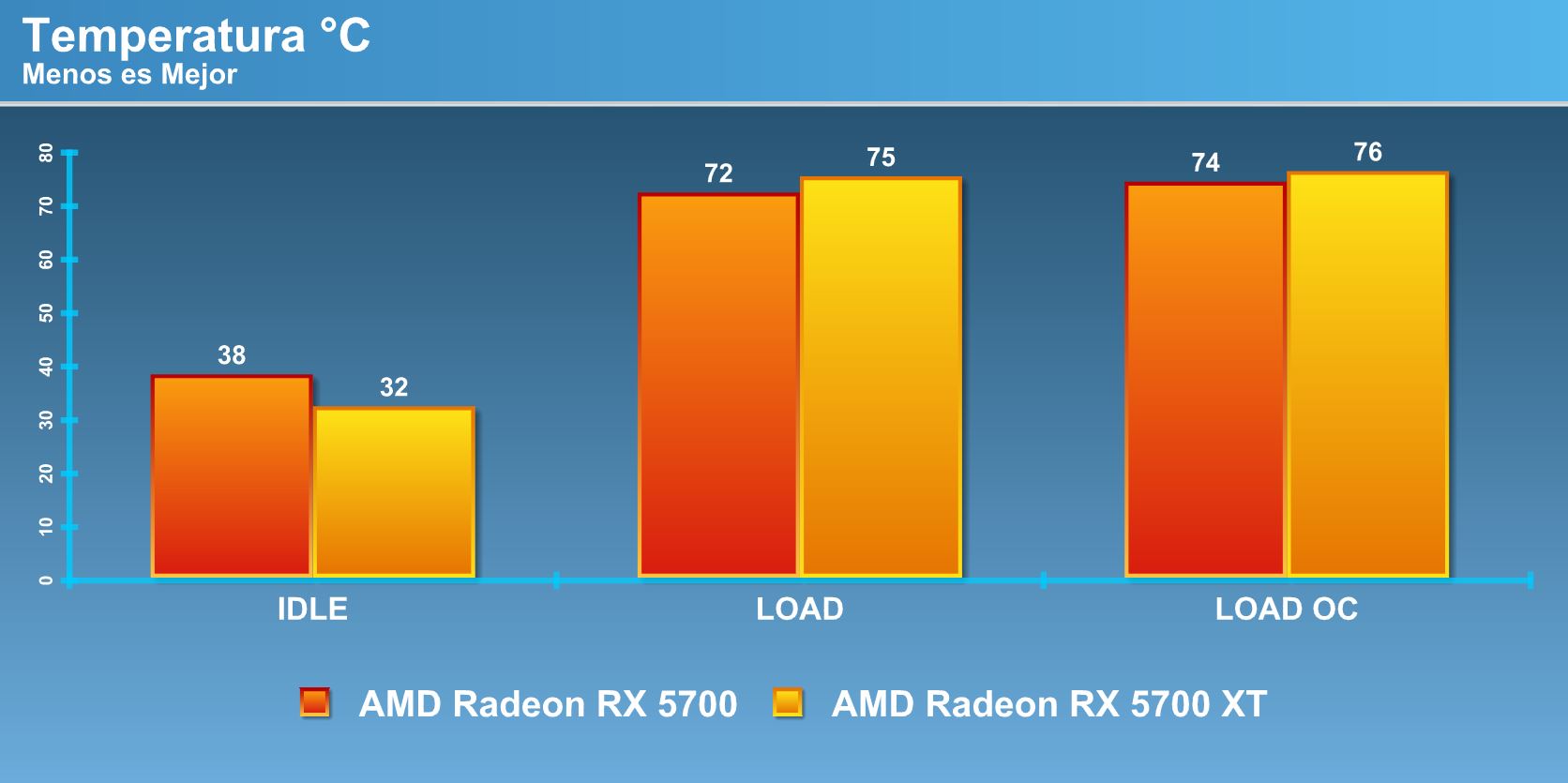
Measuring the temperatures of both models, we can see that AMD has polished in a certain way this new generation of GPUs, managing to develop a pick temperature of 75ºC for its most powerful model, all this under a reference cooling system with blower. The fan speed at rest does not exceed 15% of its speed and when it is at maximum load even under overclocking, the maximum speed it develops is 45%.
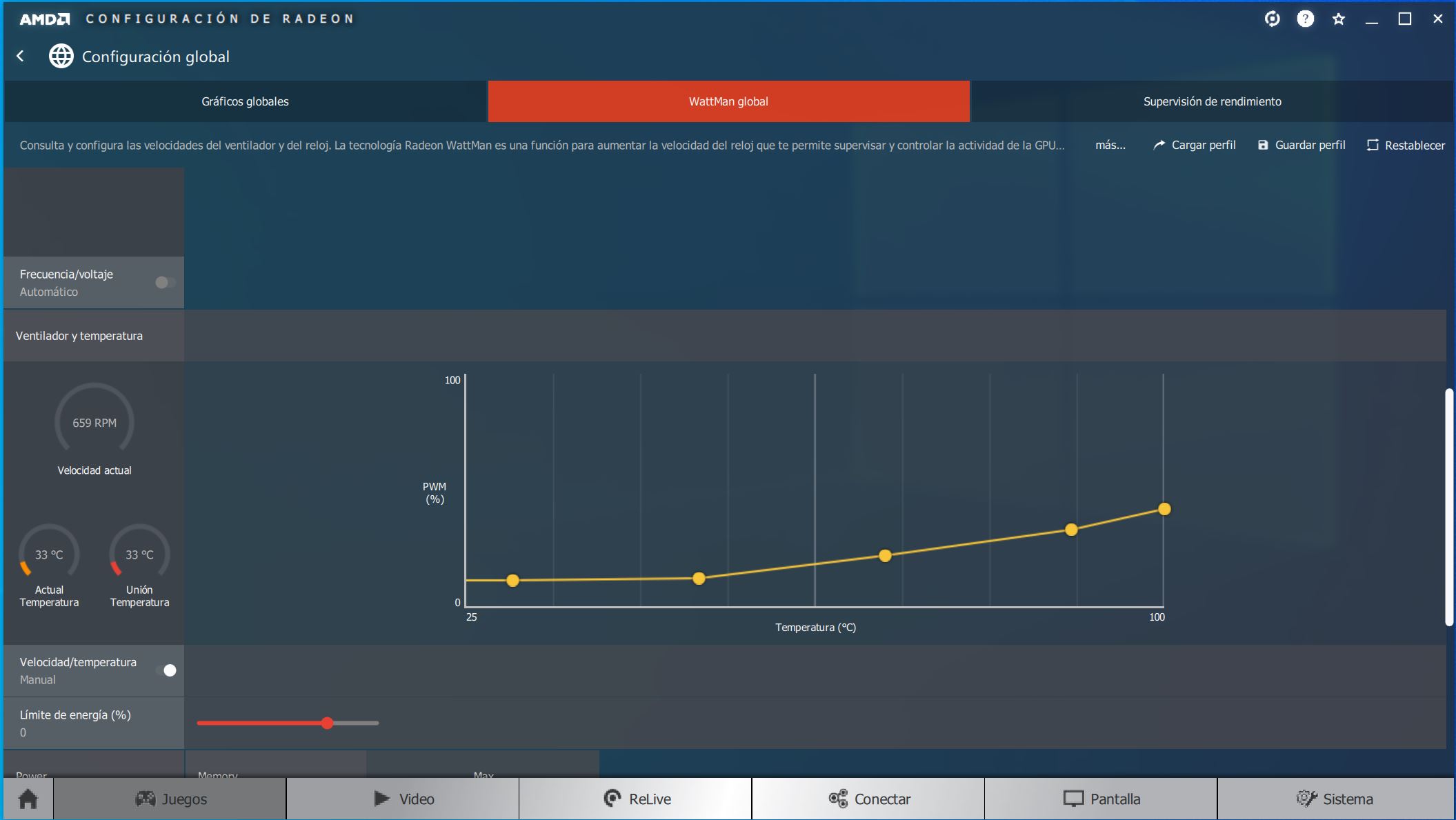
Regarding the temperature we can see in WattMan that fan activation curve is poorly pronounced. The graph shows that the fans are activated very slowly, reaching their 50% pick just at 100 ° C. AMD probably seeks to keep this speed low to deliver low noise emission from the blower.
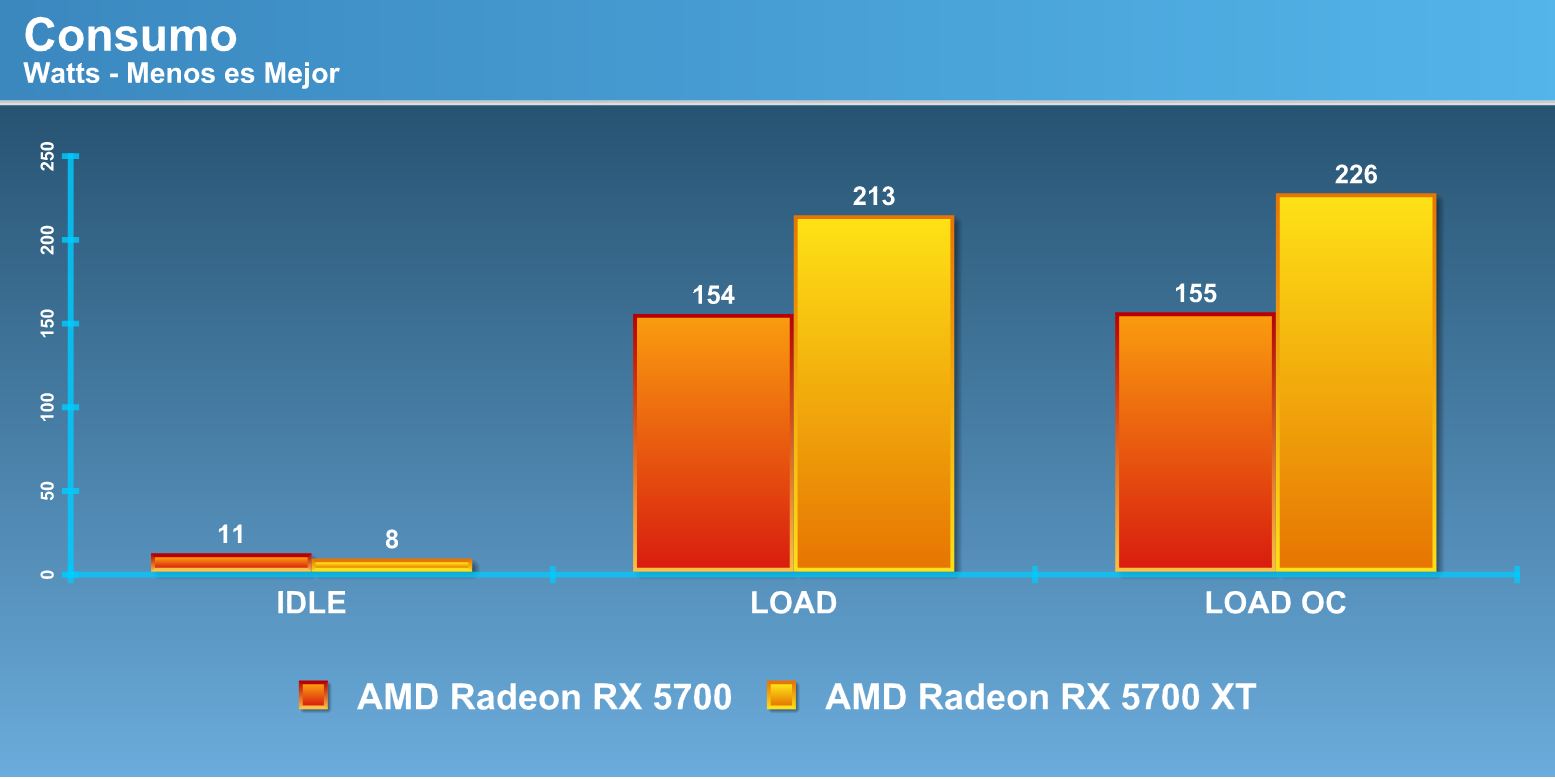
Moving on to what is consumption, we see the Radeon RX 5700 slightly passing 150W and its older sister reaching 226W, consumption that is honestly acceptable for the range and performance to which it is pointing. This is in line with the announced TBP of 185 and 225 W for each.
Overclocking.
As the GPU-Z does not show the frequency of the GPU we leave the WattMan captures with the changes in the frequency.
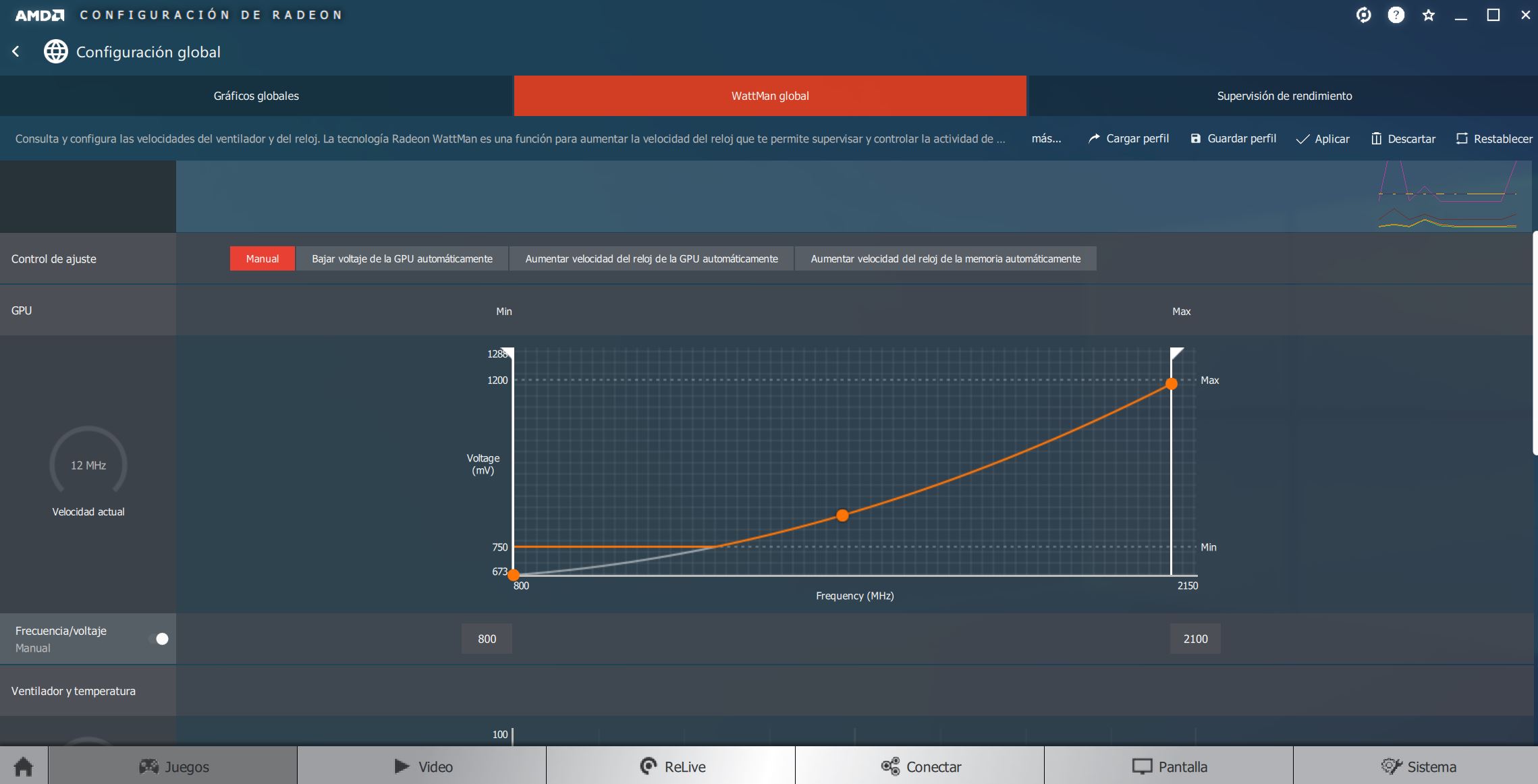
AMD Radeon RX 5700XT OC = 2150 MHz
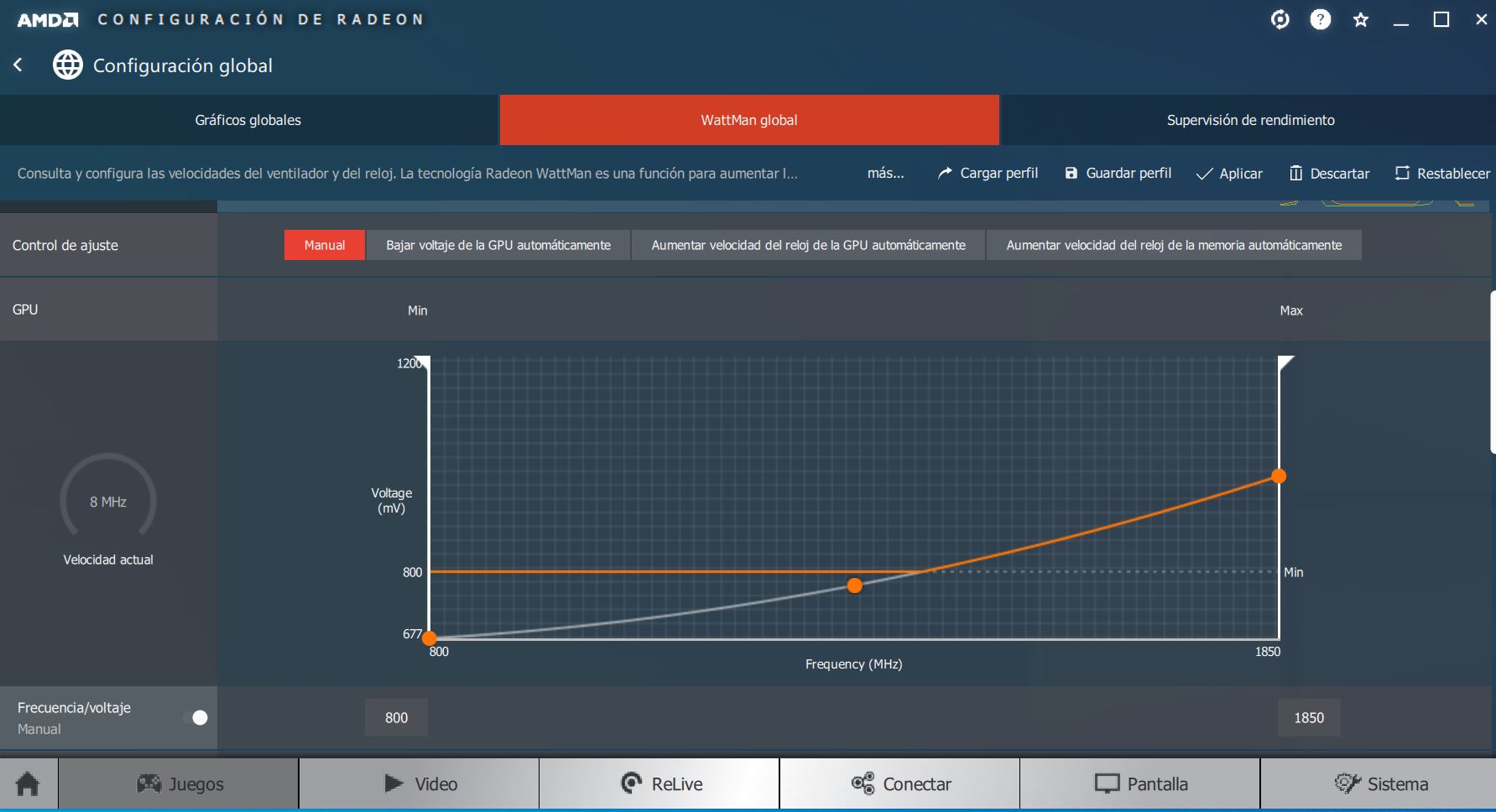
AMD Radeon RX 5700 OC = 1850 MHz
The memories were not touched, since they come to their factory maximum.
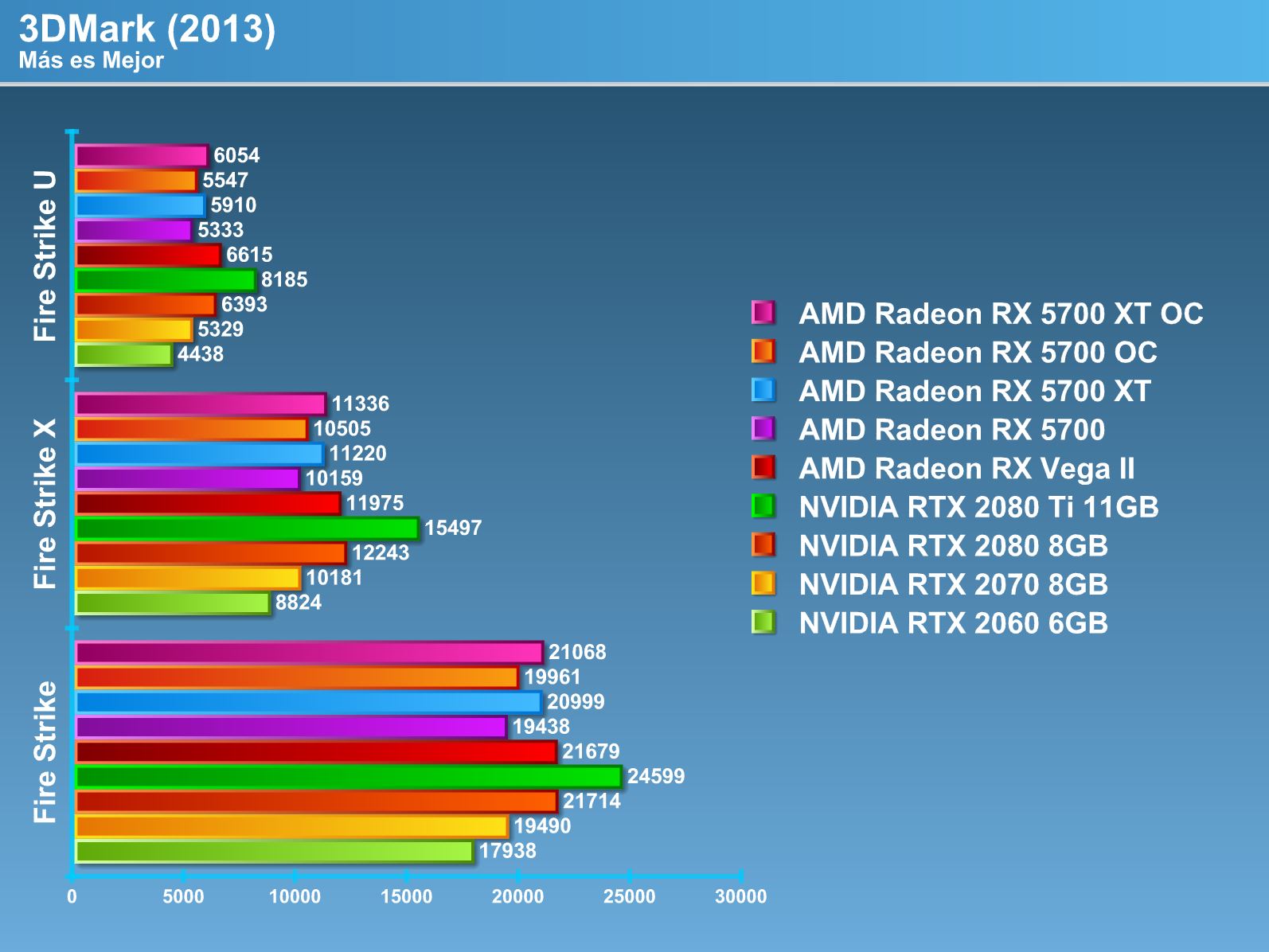
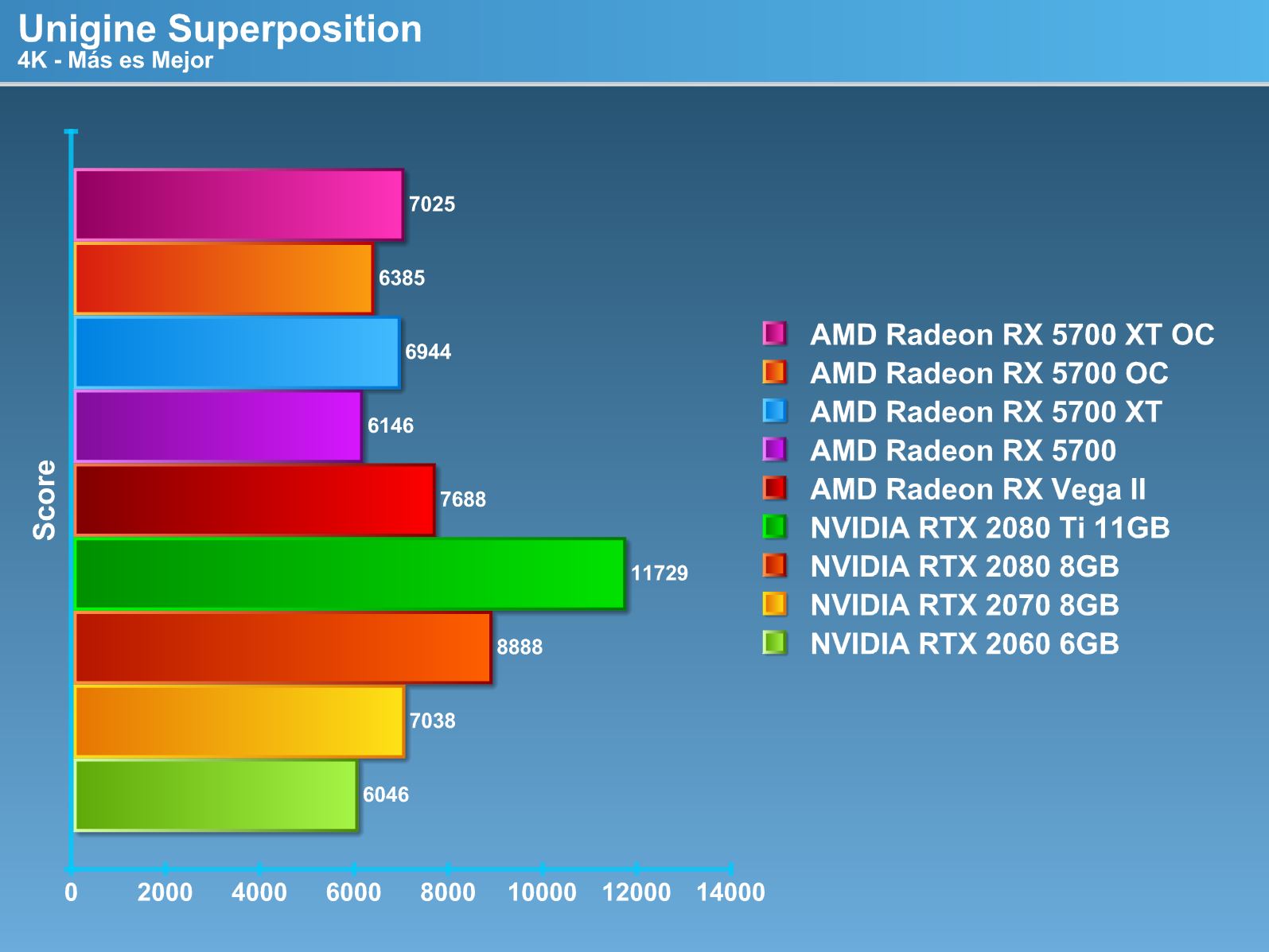
It is possible that this performance can be experienced in the next custom models by assemblers, as we well know these commonly bring a slight factory overclocking which could be very similar to what was shown in the tests.
This small increase in GPU frequencies practically nullifies the difference that could exist with an NVIDIA RTX 2070 model, although well, when NVIDIA SUPER models are already there, such a scenario will be very different.
Conclusion.
Many of us have seen how AMD Radeon has tried to innovate, seeking to demonstrate that its area of graphic processors is capable of delivering compelling solutions to the instances in which the technology is located, we saw it in the HD 5000 series as the first GPUs with support for DX 11 and now with Radeon VII and Navi as the first GPUs with 7nm architecture, however, as pioneers in new technologies, they face the disadvantages of implementation, as always everything that is new goes through a series of tunings, something that AMD experienced it in Radeon VII and now Navi as a second instance for AMD to continue testing with 7nm, which is seen there was a maturation of technology.
The performance is fine, it is according to what was promised and it is something that we also saw with Radeon VII, a GPU that comes to fight against a mature and powerful architecture on the side of NVIDIA, with some lag. For now it is not envisioned that you can get to have an absolute king GPU in performance, but as RDNA is thought, and the performance presented with these first cards, maybe in a couple of iterations, AMD comes to surprise.
The non-incorporation of RayTracing for some can be a crucial and decisive point at the time of purchase, and above all with the arrival of the new RTX Super, where there was an increase in the overall performance of these cards. In addition, the inclusion of RT by video game developers has been increasing, and many AAA titles that were presented at E3 announced the incorporation of this technology for their new titles.
Regarding temperature and consumption, the truth is that this is the second opportunity of AMD to show an architecture in 7nm, where an improvement is appreciated versus what seen with Radeon VII. Here it is possible to see how the change to RDNA paid off, however it still has to be further refined, since in this area it is well below what NVIDIA offers with its GeForce GTX, especially for consumption.
In some leaks it was possible to see a large litter of Navi GPUs, being the RX 5700 and RX 5700XT models the mid-range models within the entire series, this means that we could be seeing AMD models that could even directly rival with top-of-the-line models from NVIDIA, a rather ambitious onslaught from the red side.
It is not a revolutionary model in the video card market, but it is a good start to start competing in ranges above average. Many points to refine, especially for consumption but nevertheless it begins to generate new instances to see AMD Radeon as an option within the users, something that is not only limited to the price of these, but also to the performance that they can arrive deliver.
Hopefully, the customized models can generate a greater possibility of acceptance within the market, since the reference models cause a certain rejection and with some reason.





![Review AMD Radeon RX 5700 XT and Radeon RX 5700 [AMD Radeon Navi] |](https://www.bitcoinminershashrate.com/wp-content/uploads/2020/01/1580247382_Review-AMD-Radeon-RX-5700-XT-and-Radeon-RX-5700.jpg)









